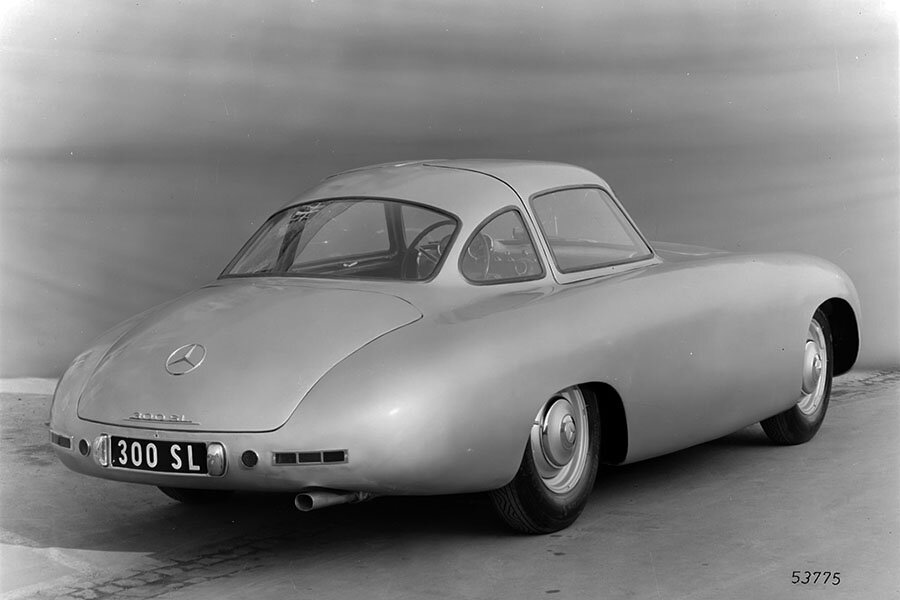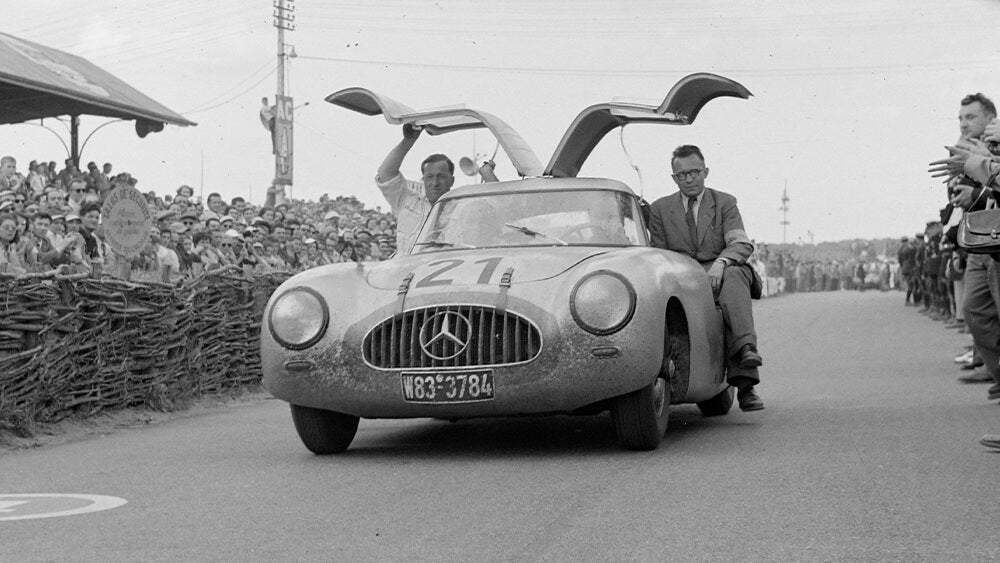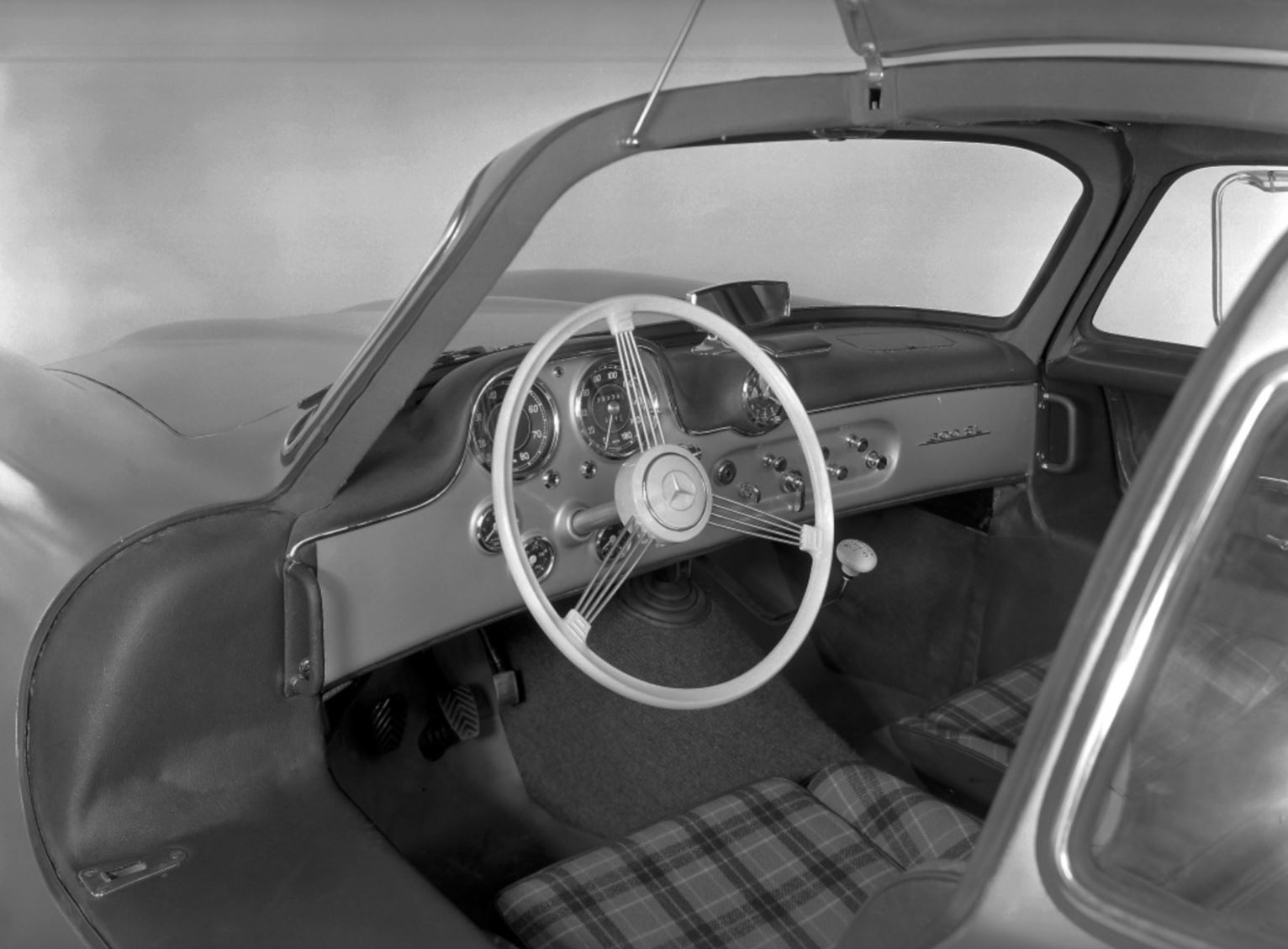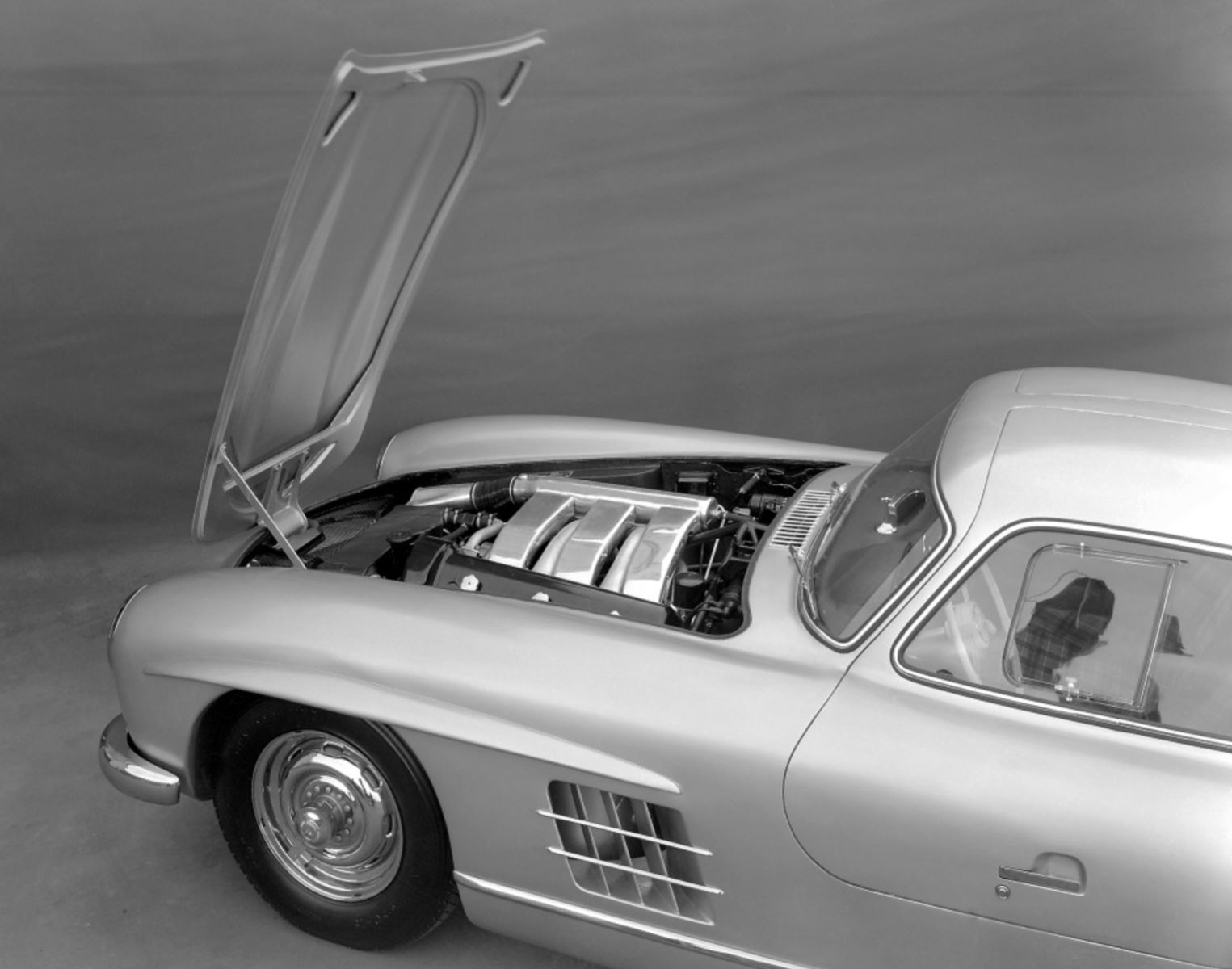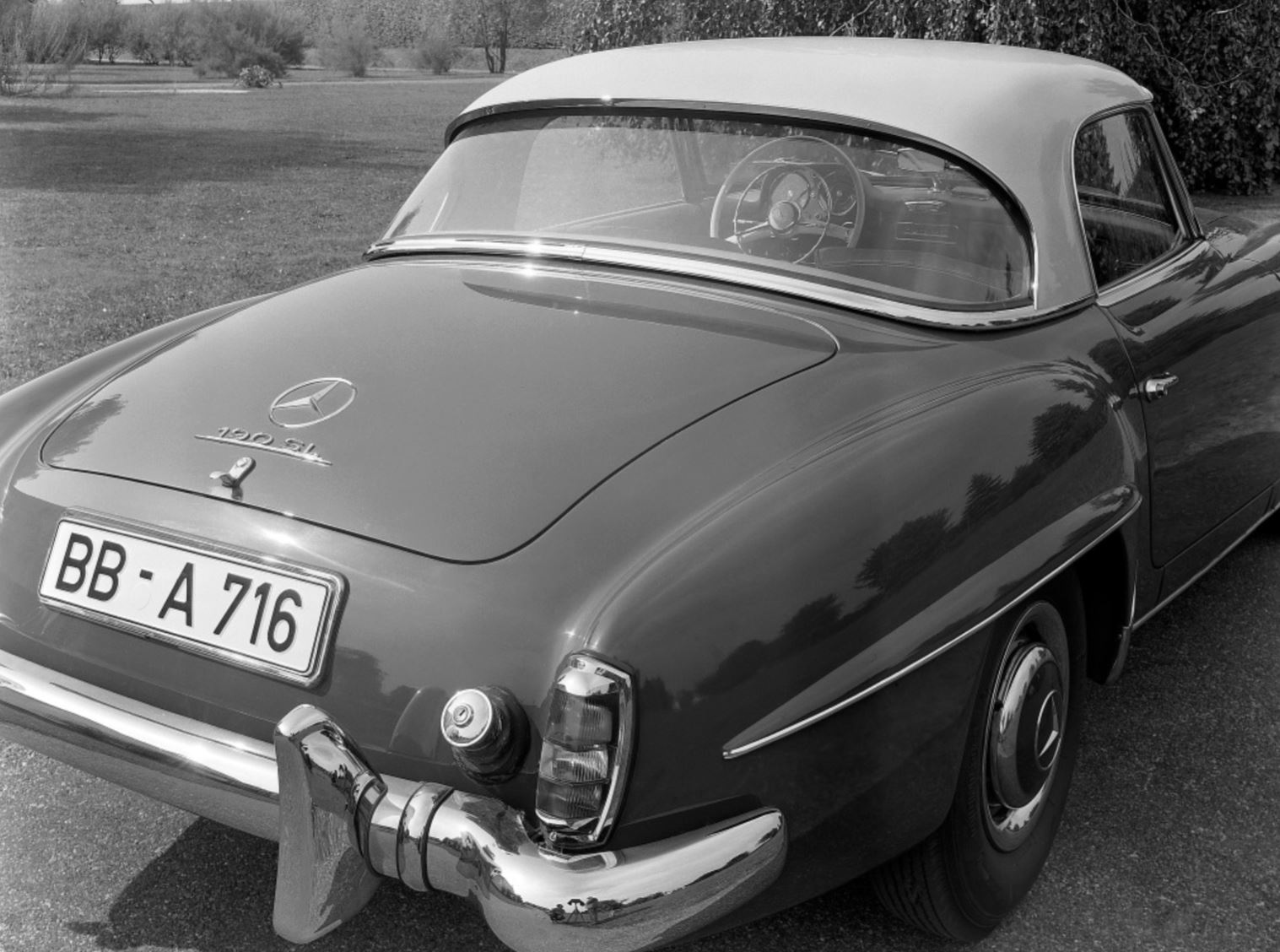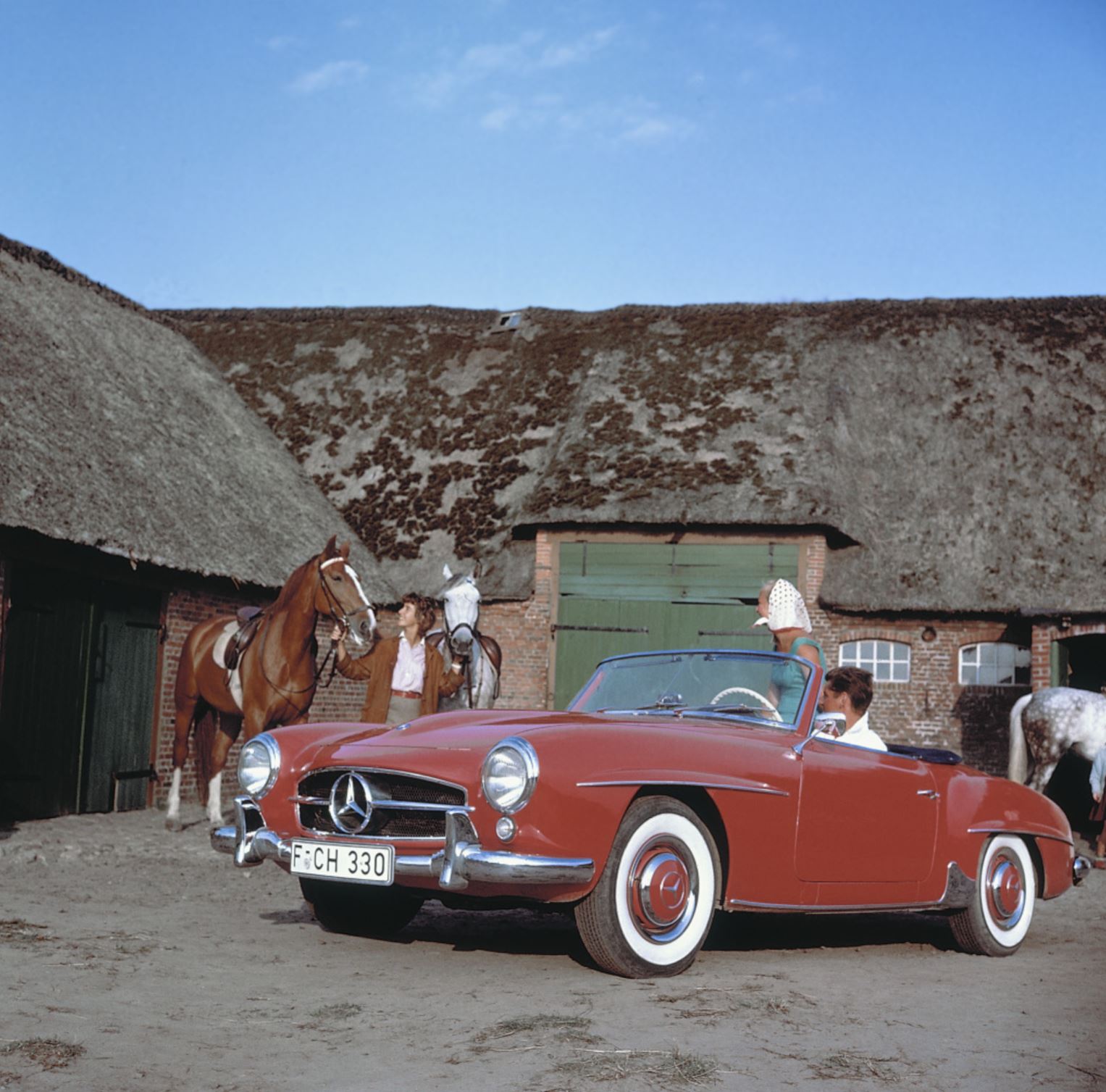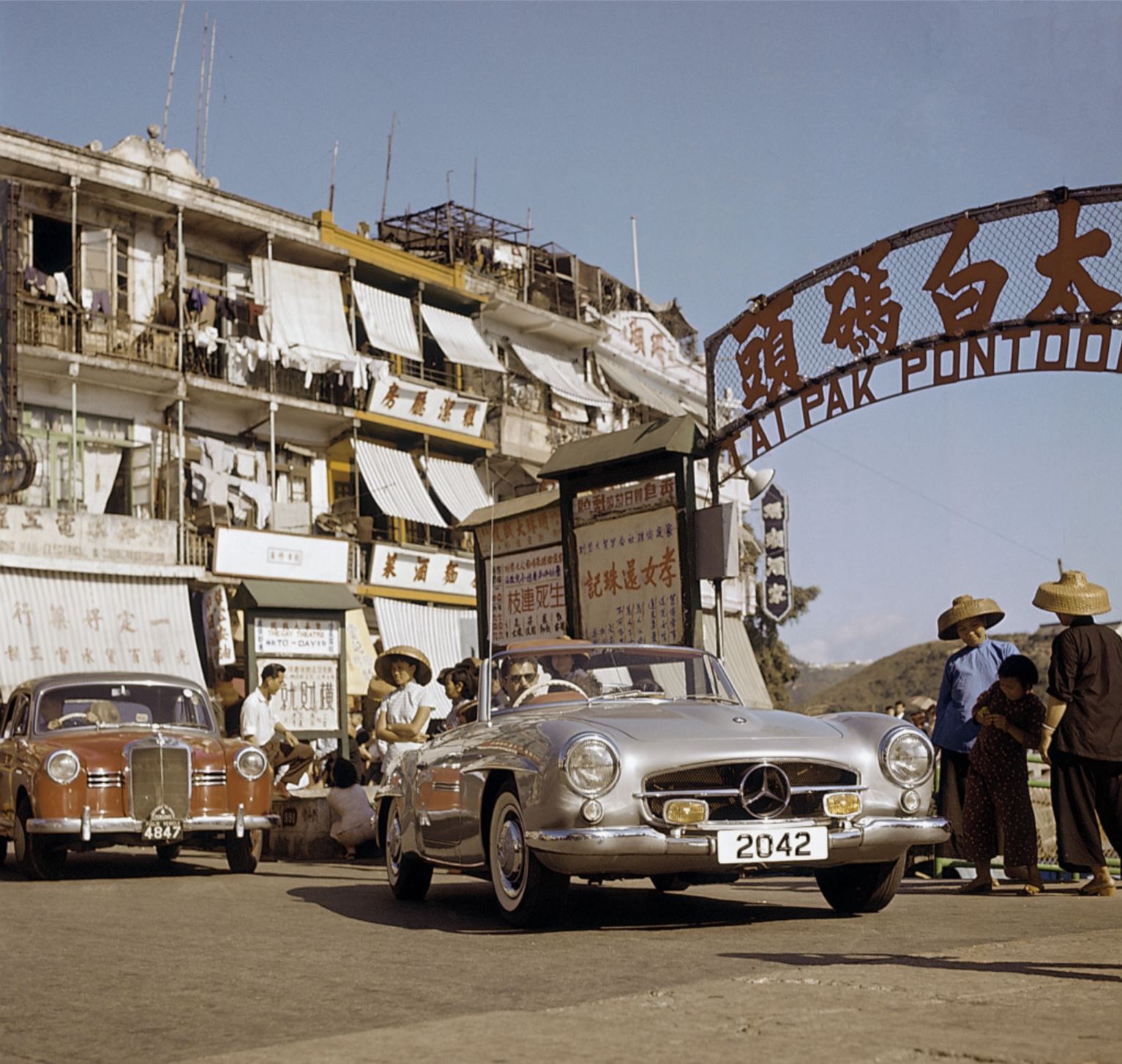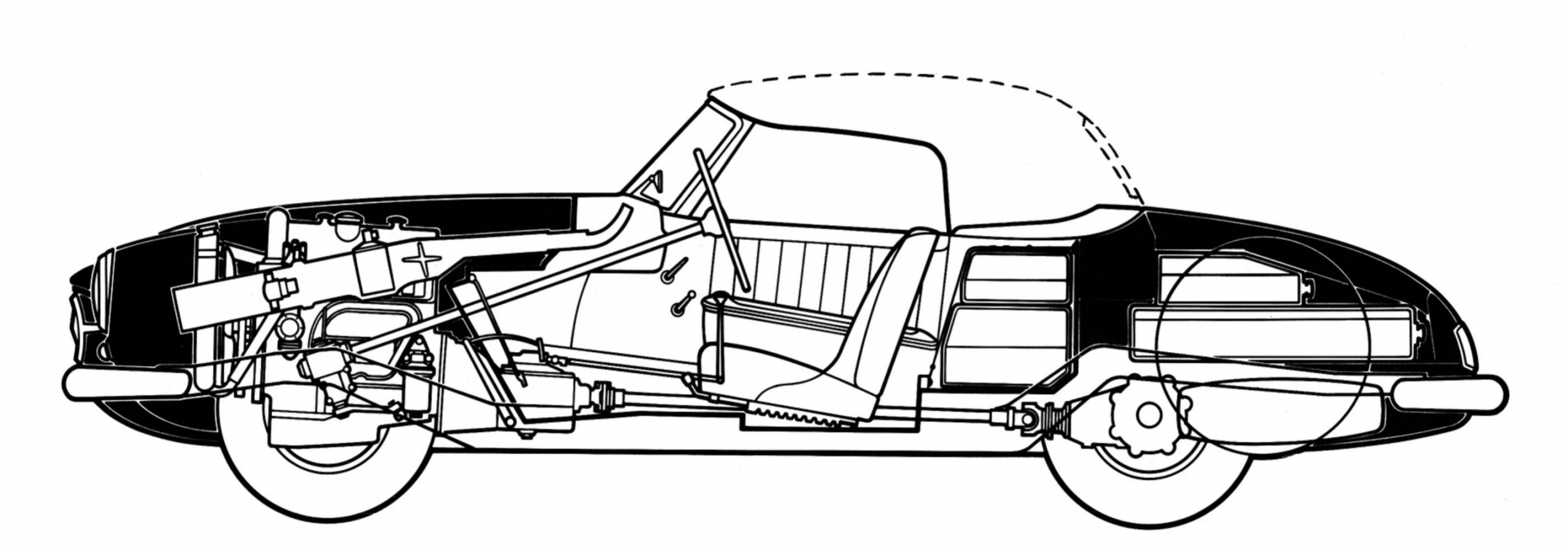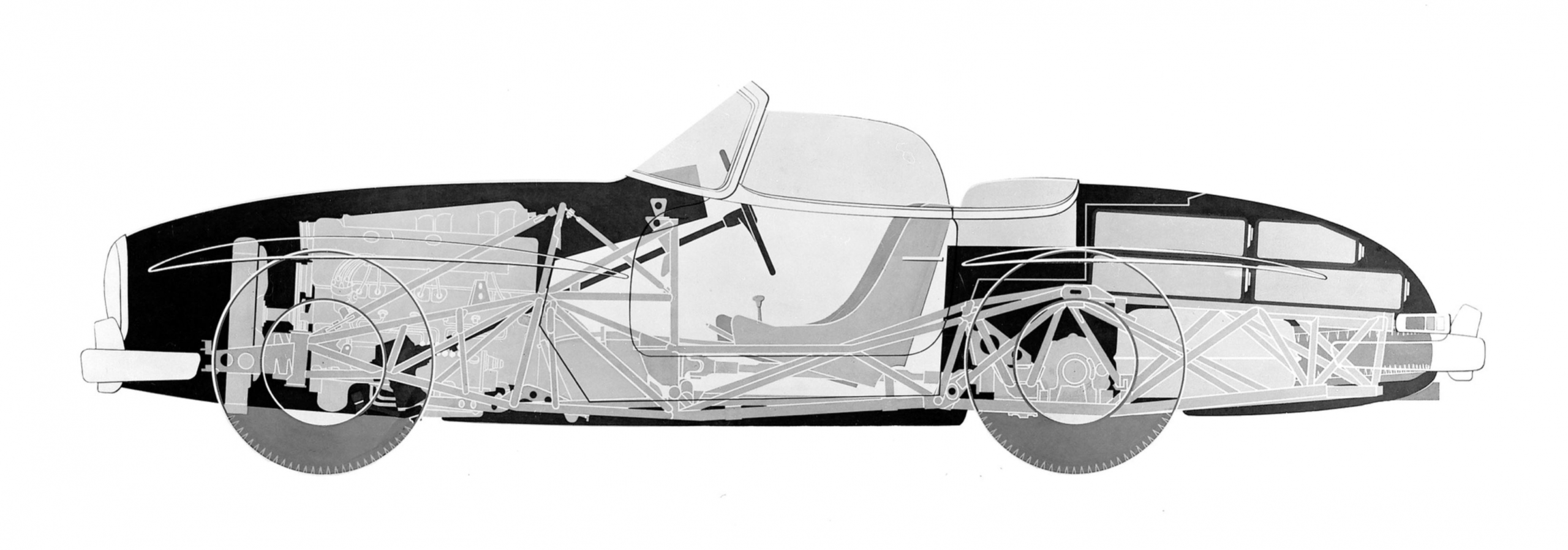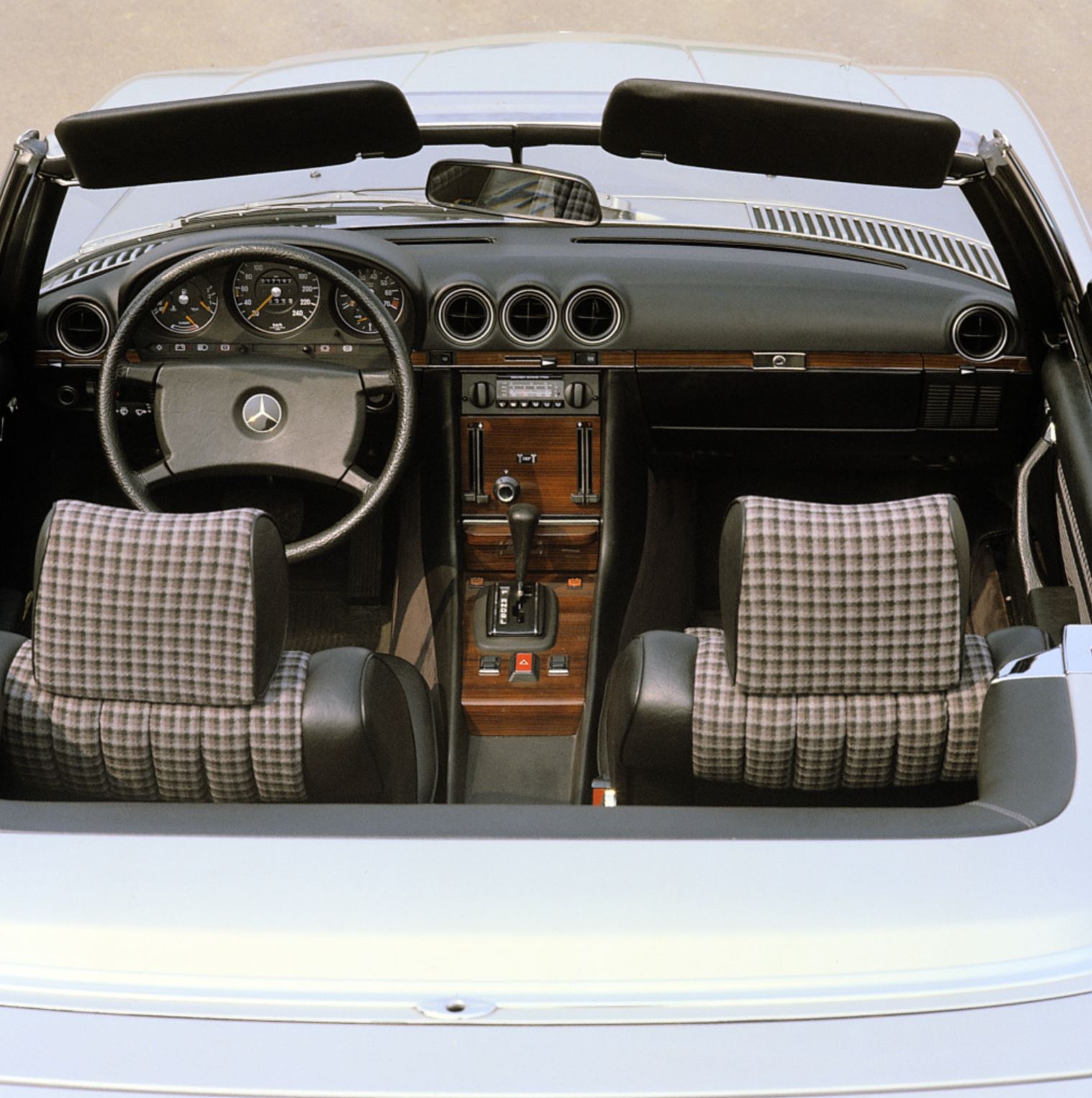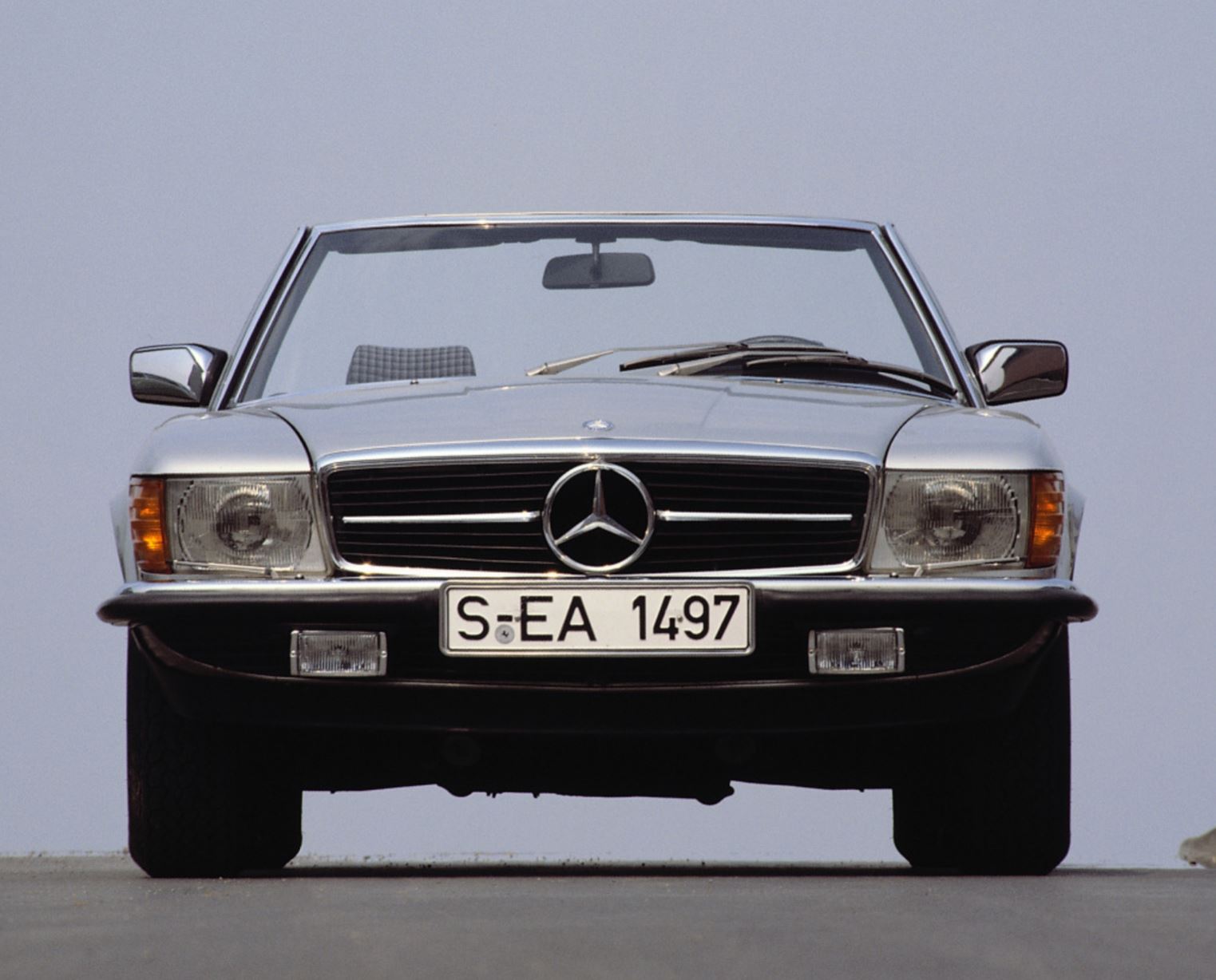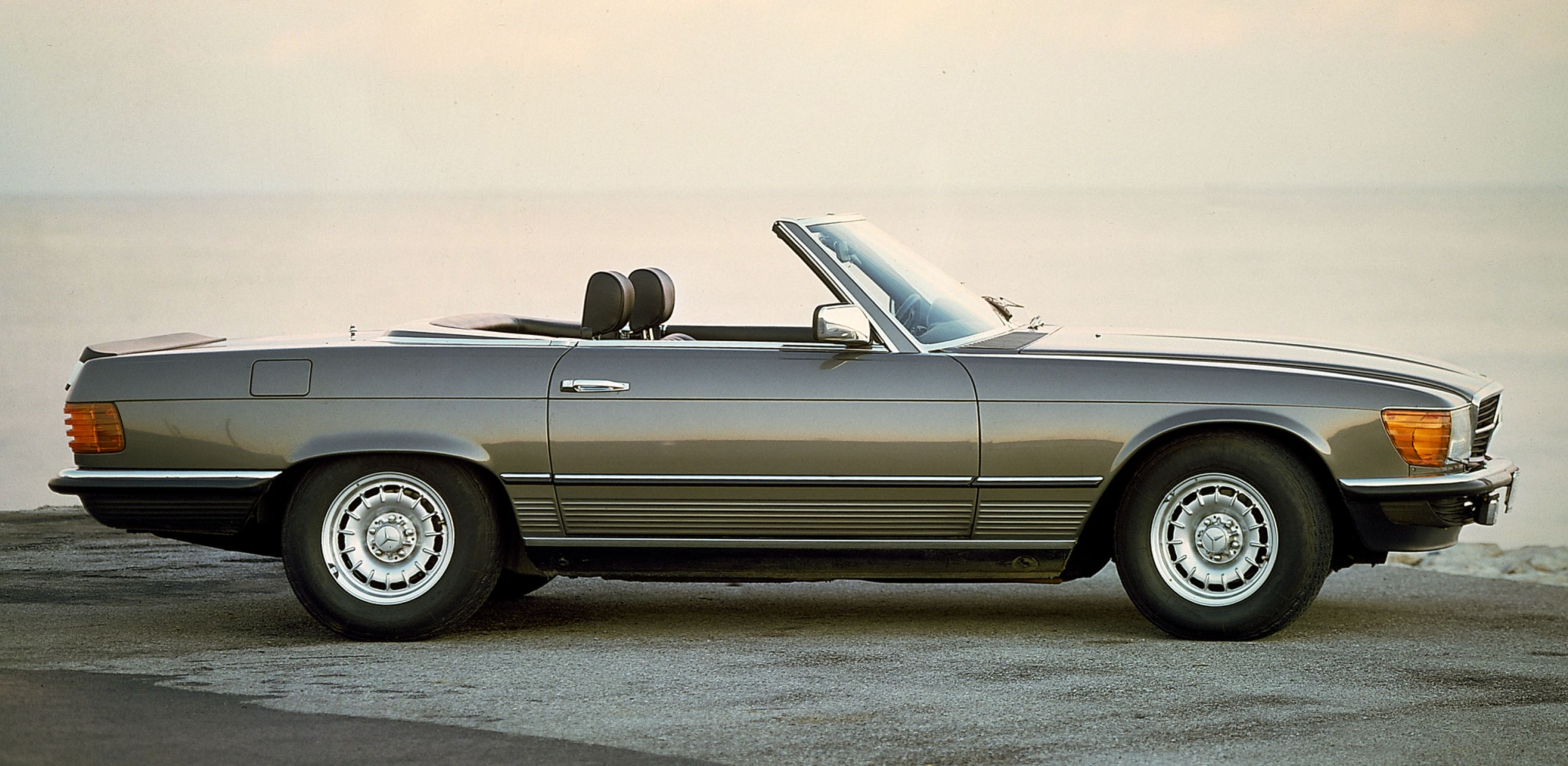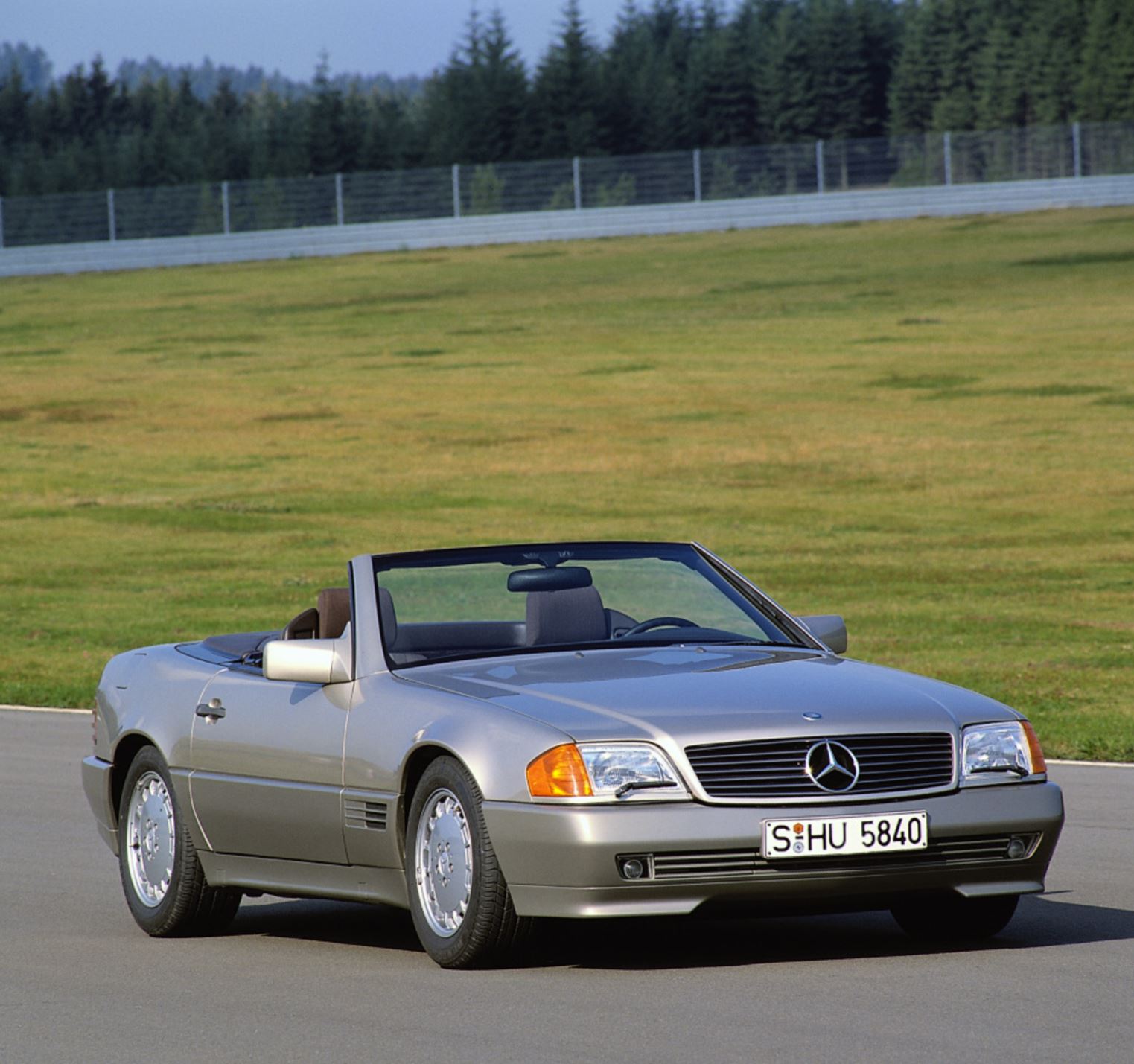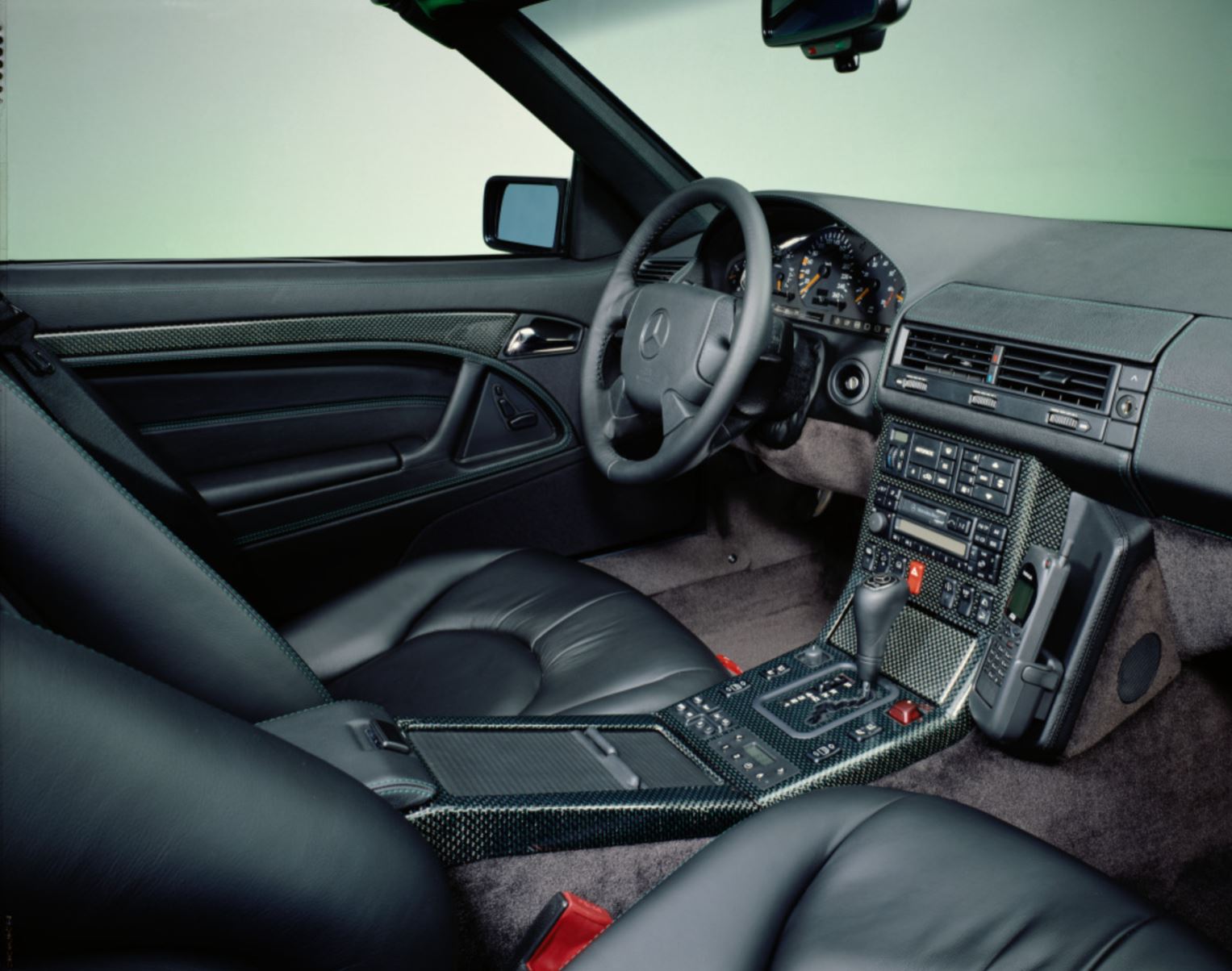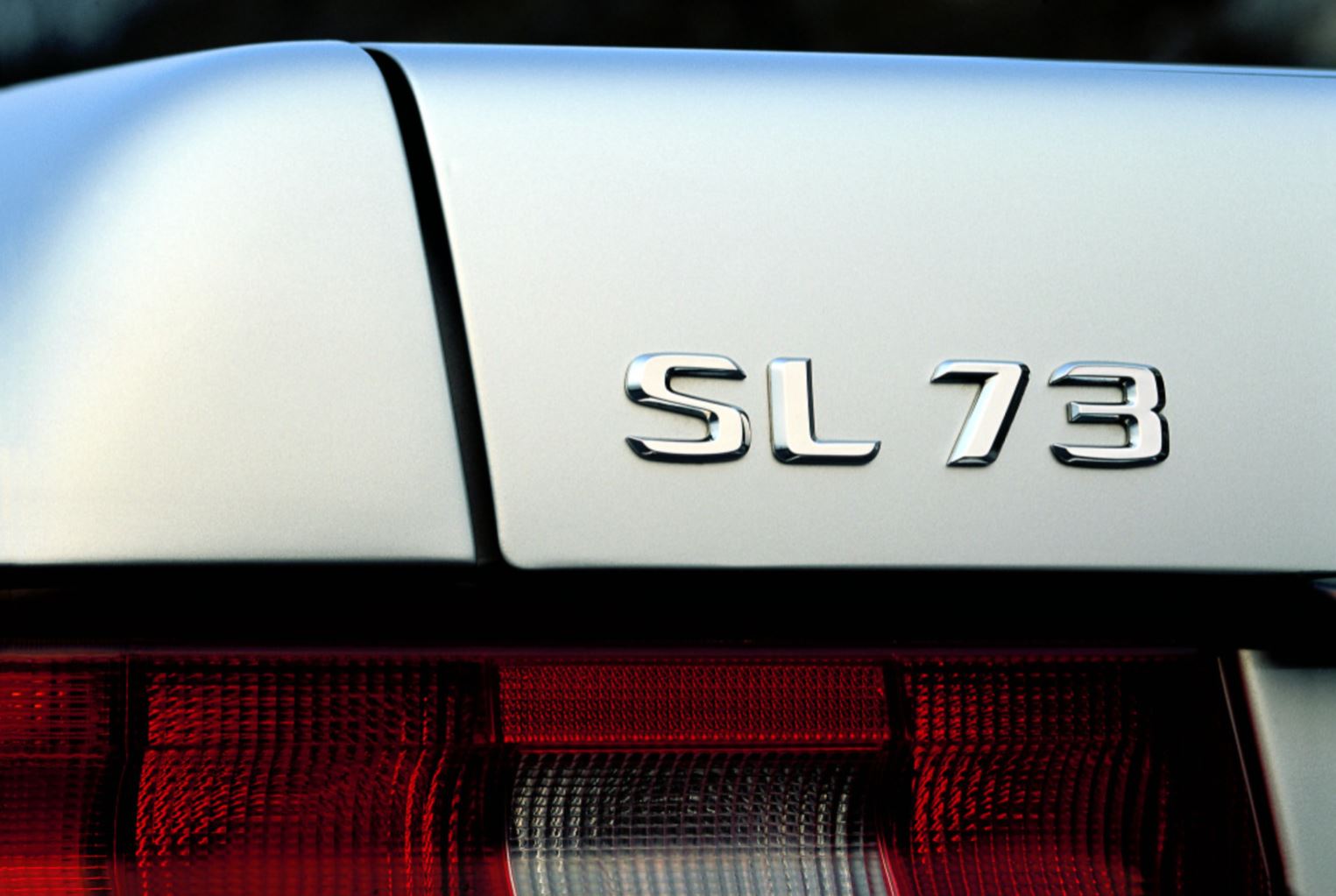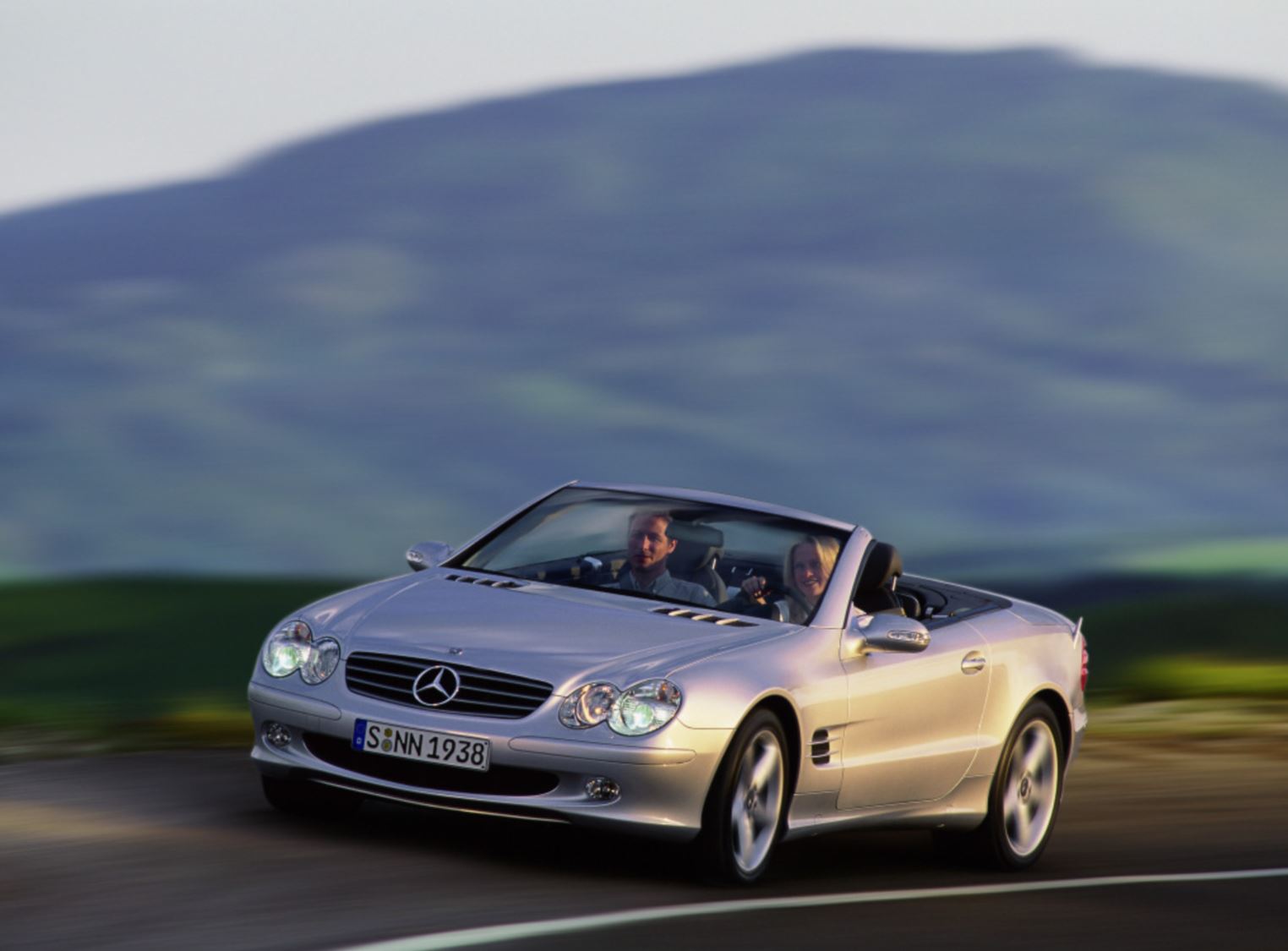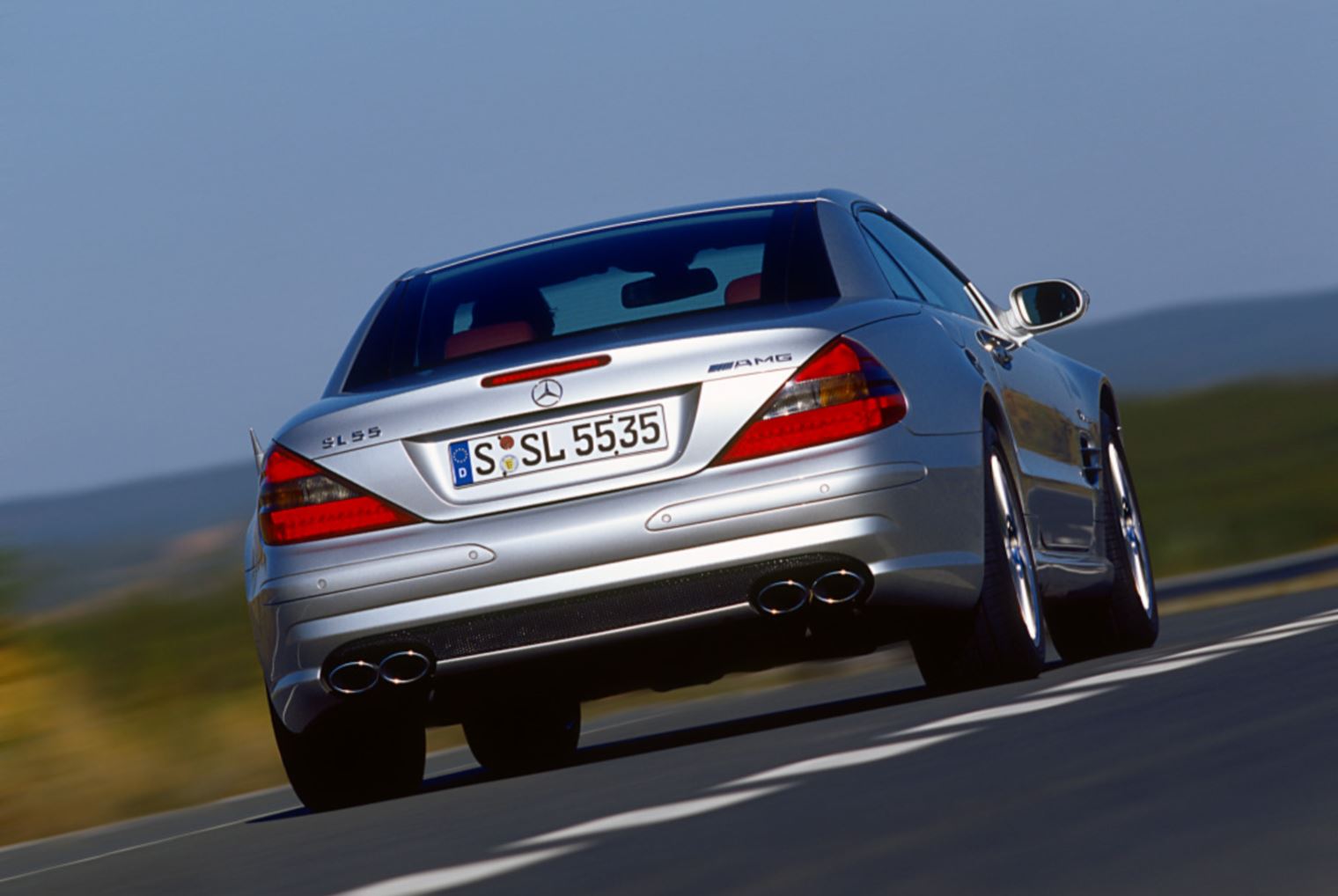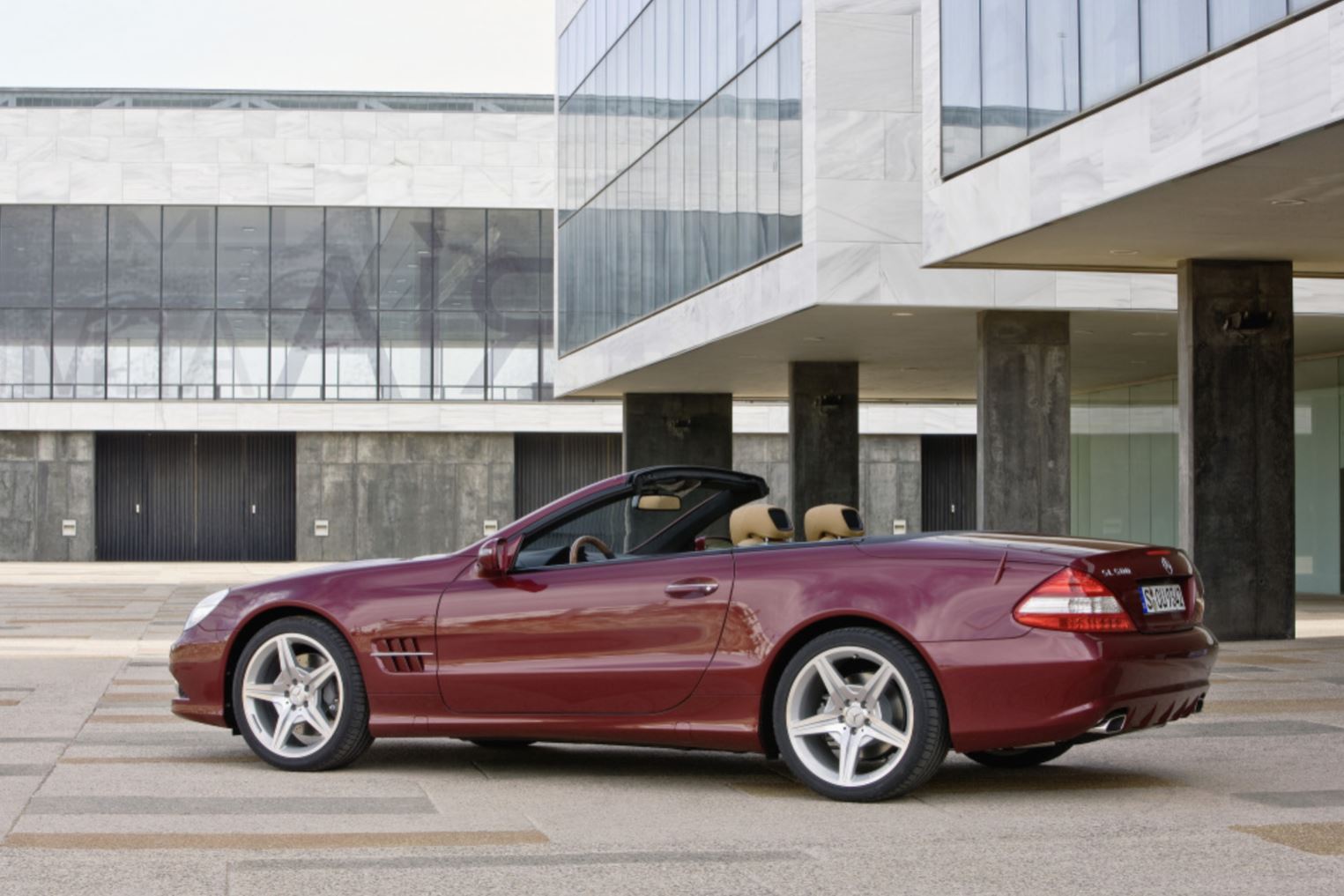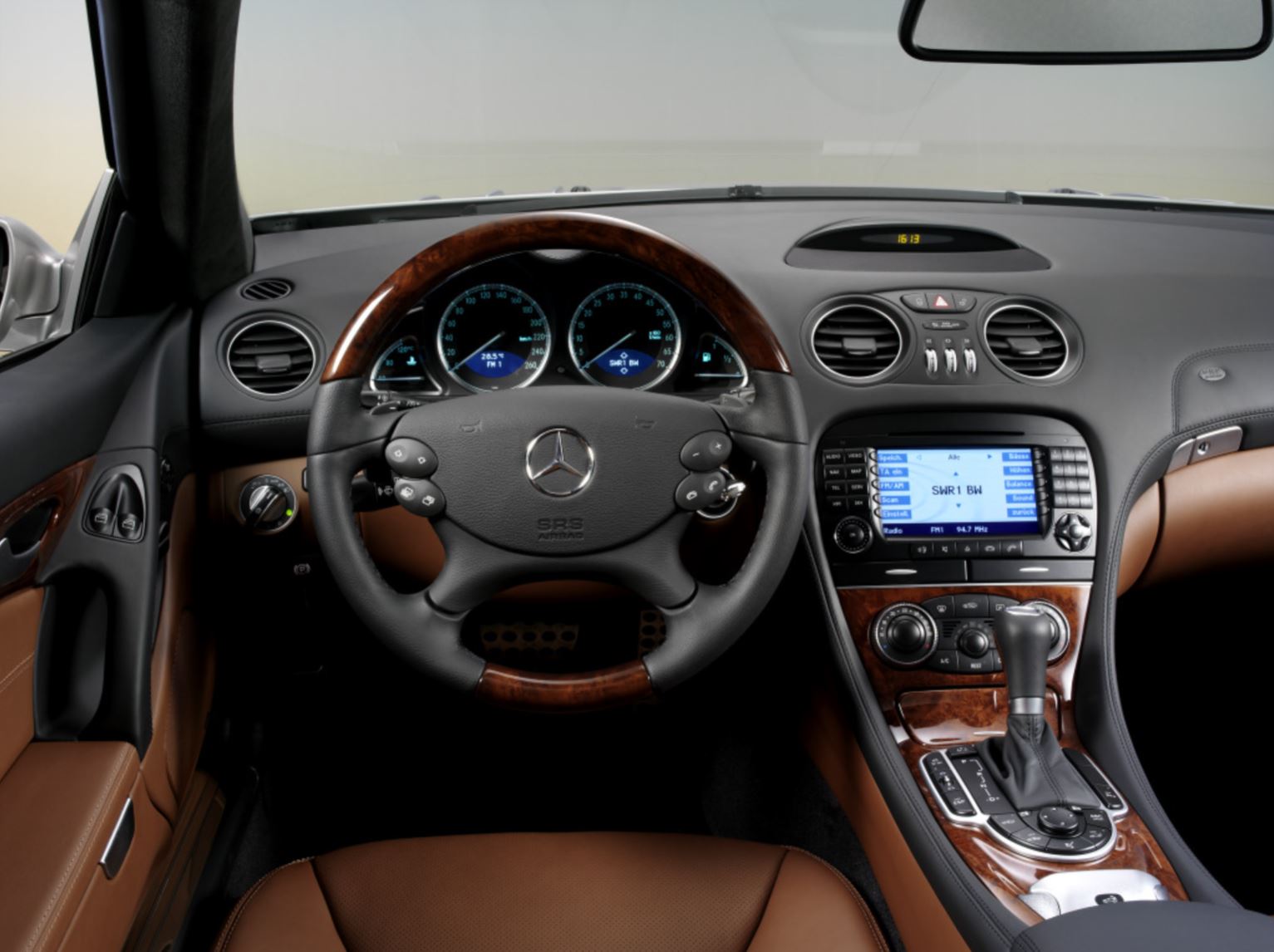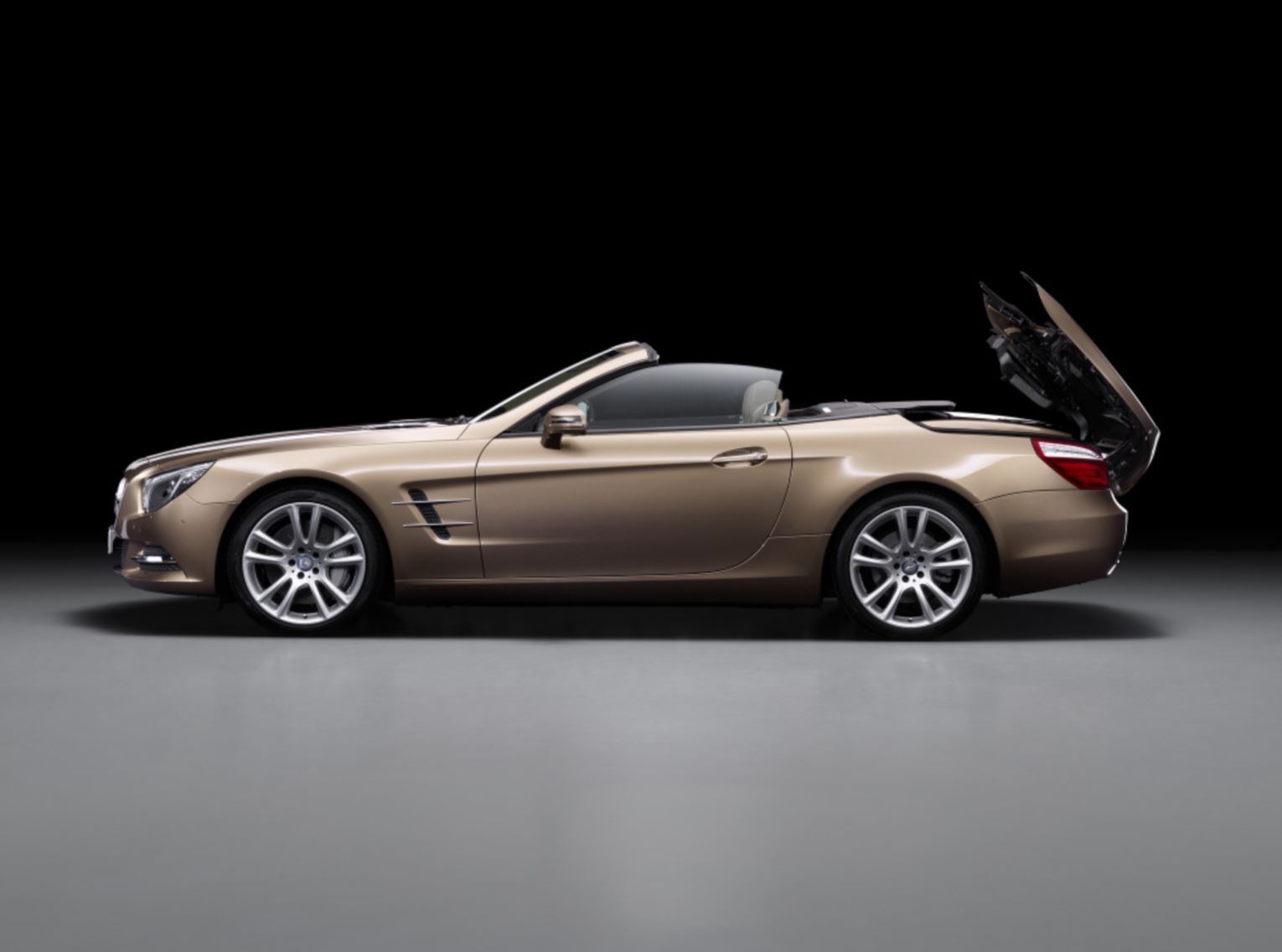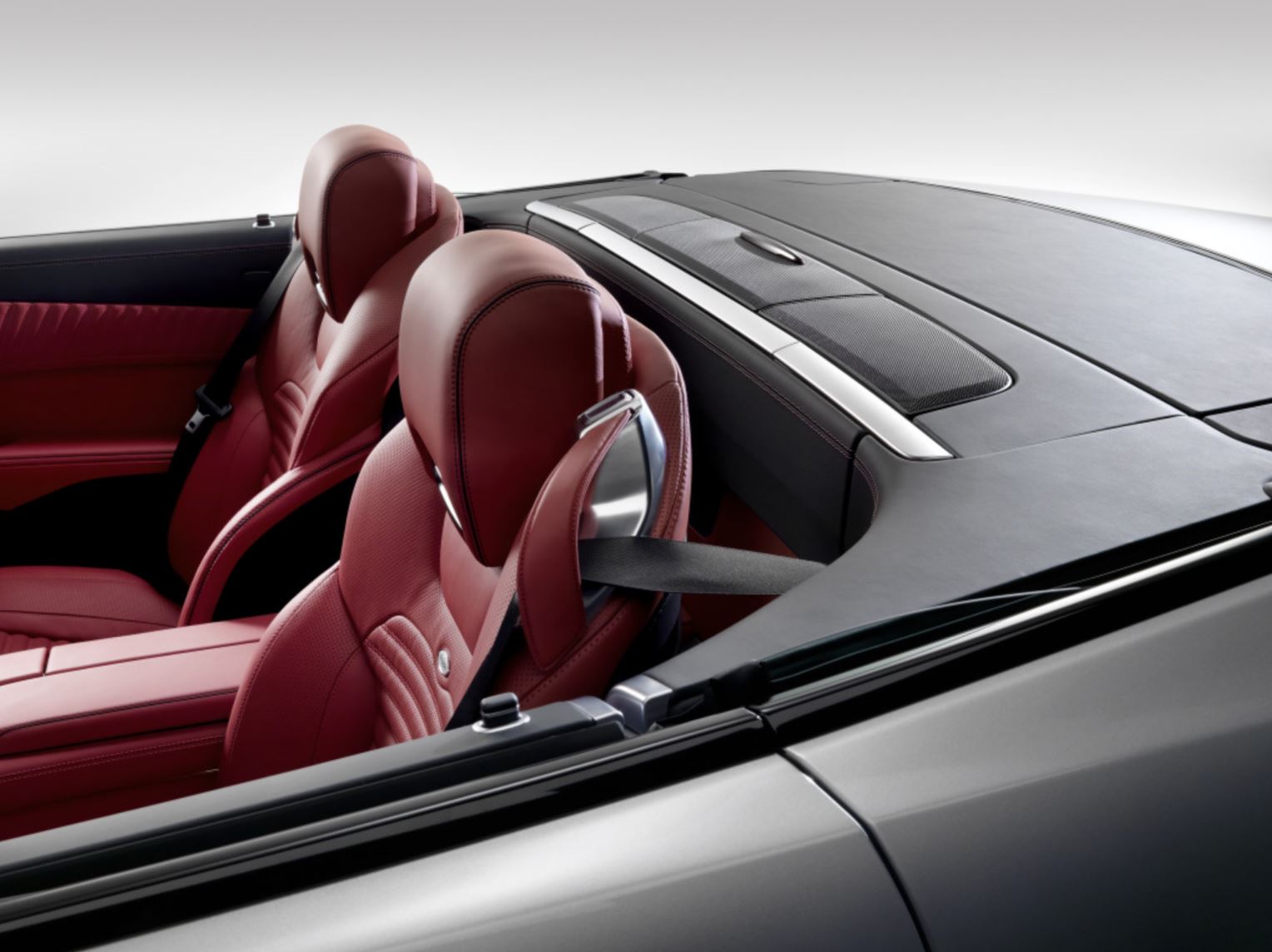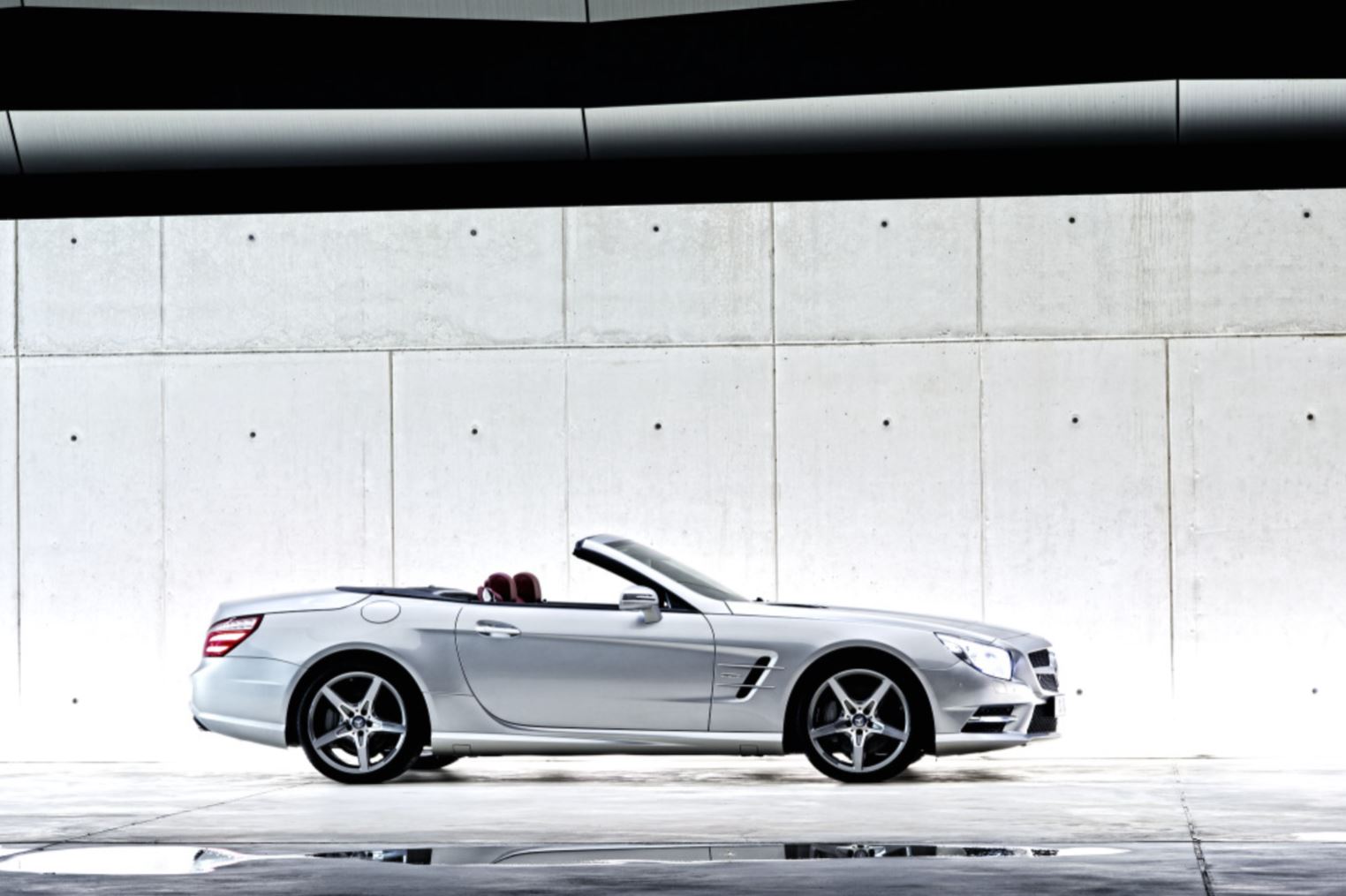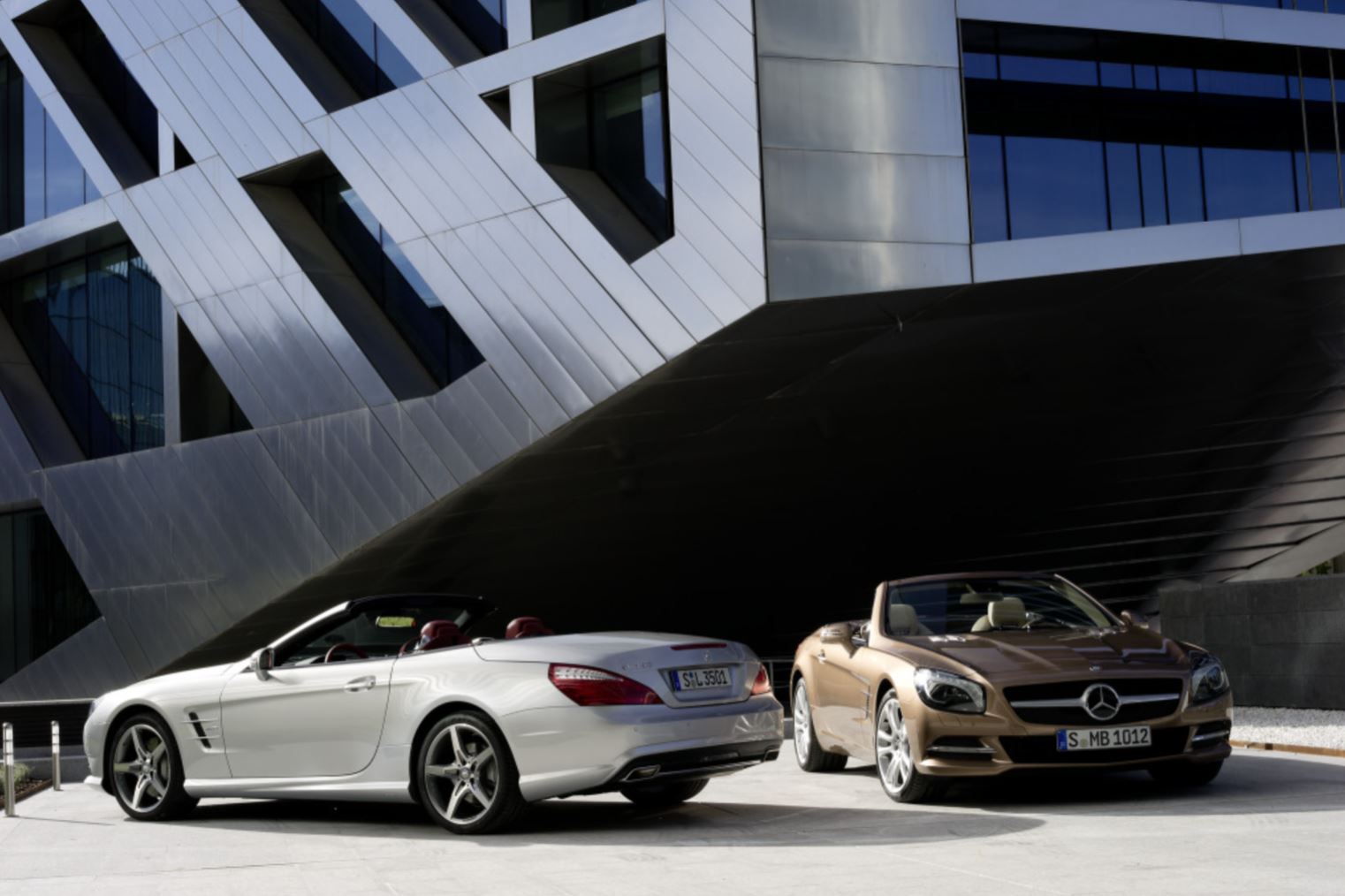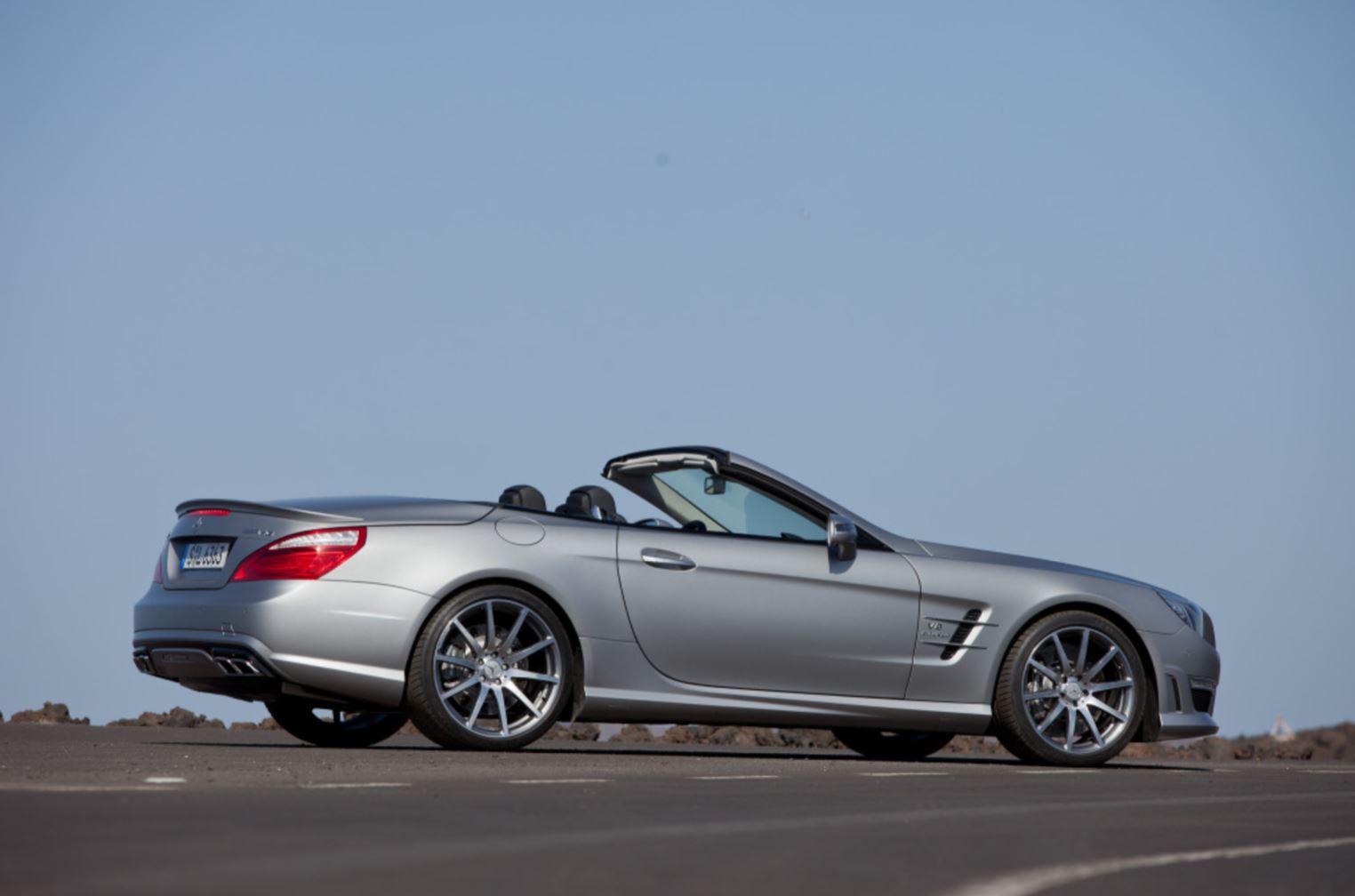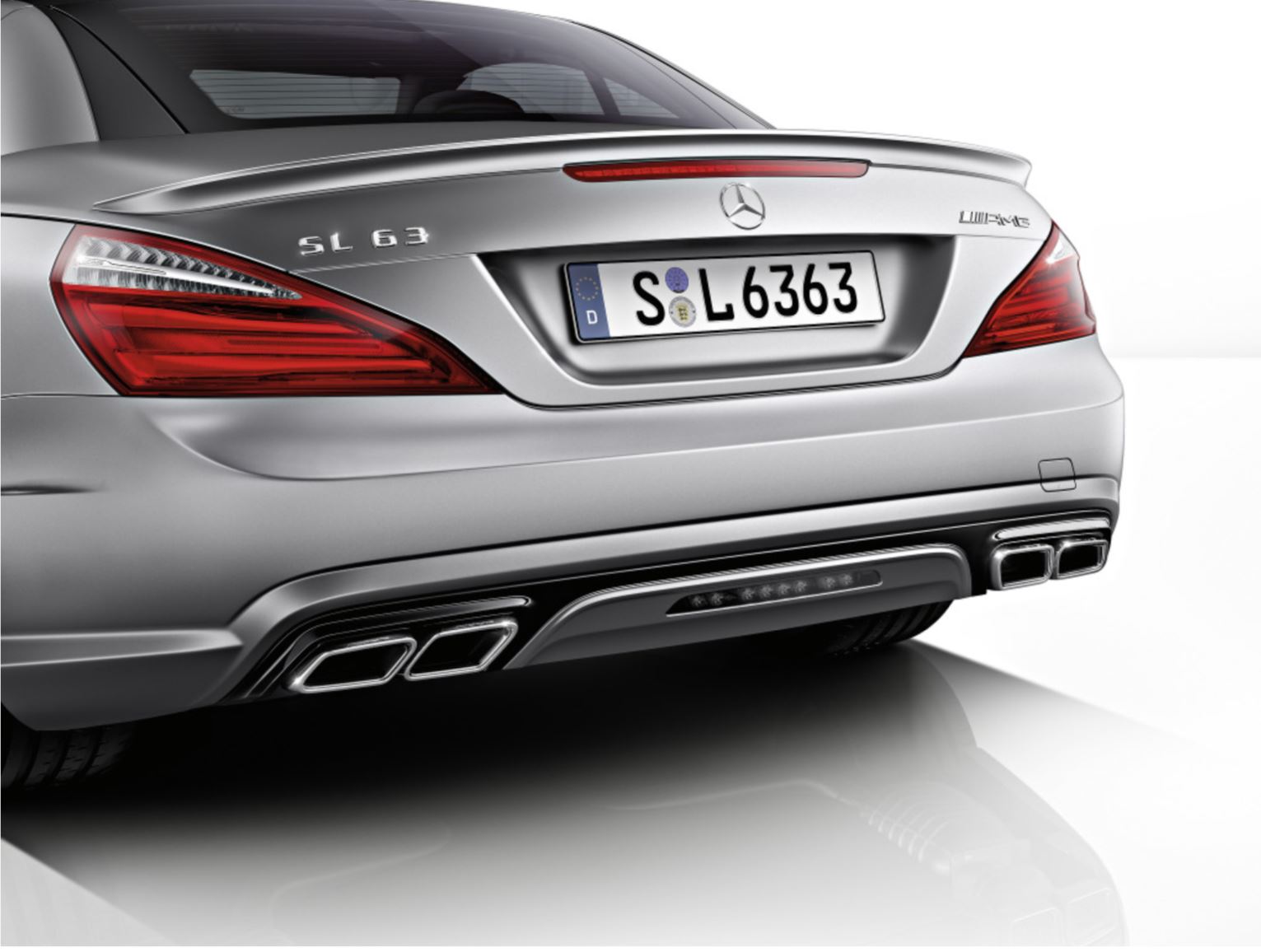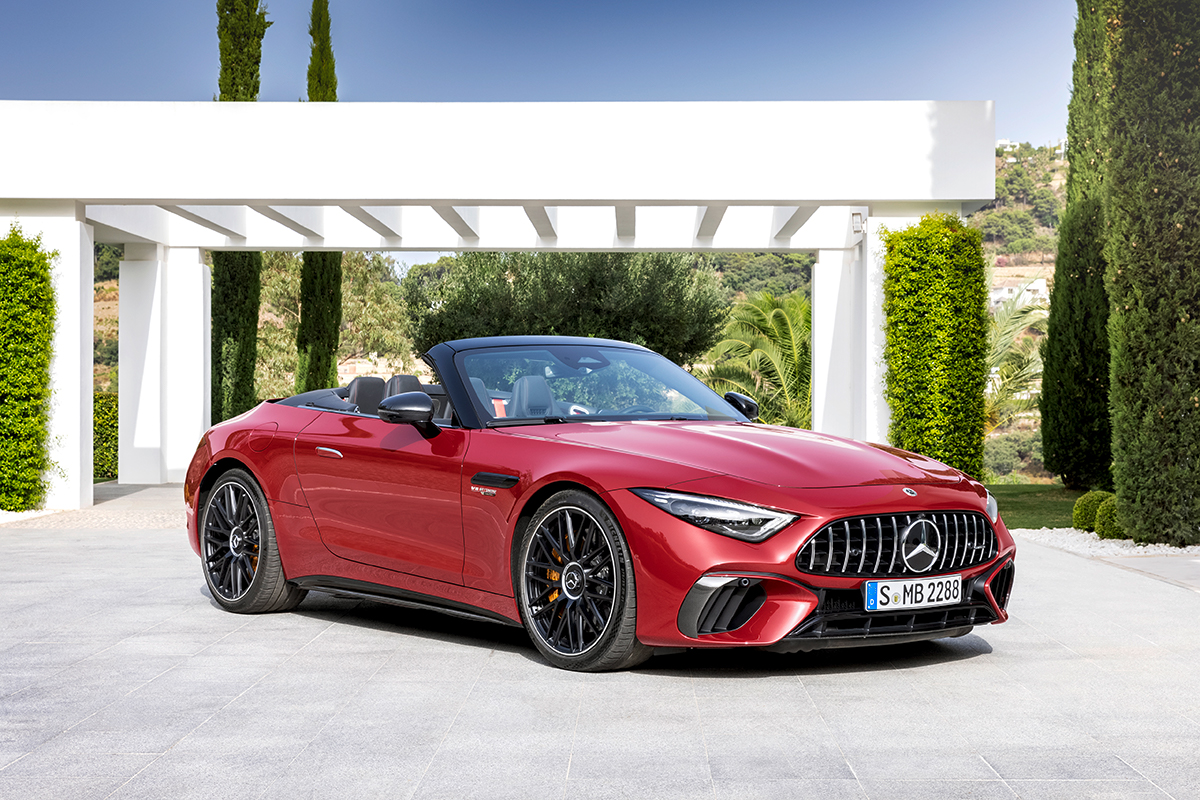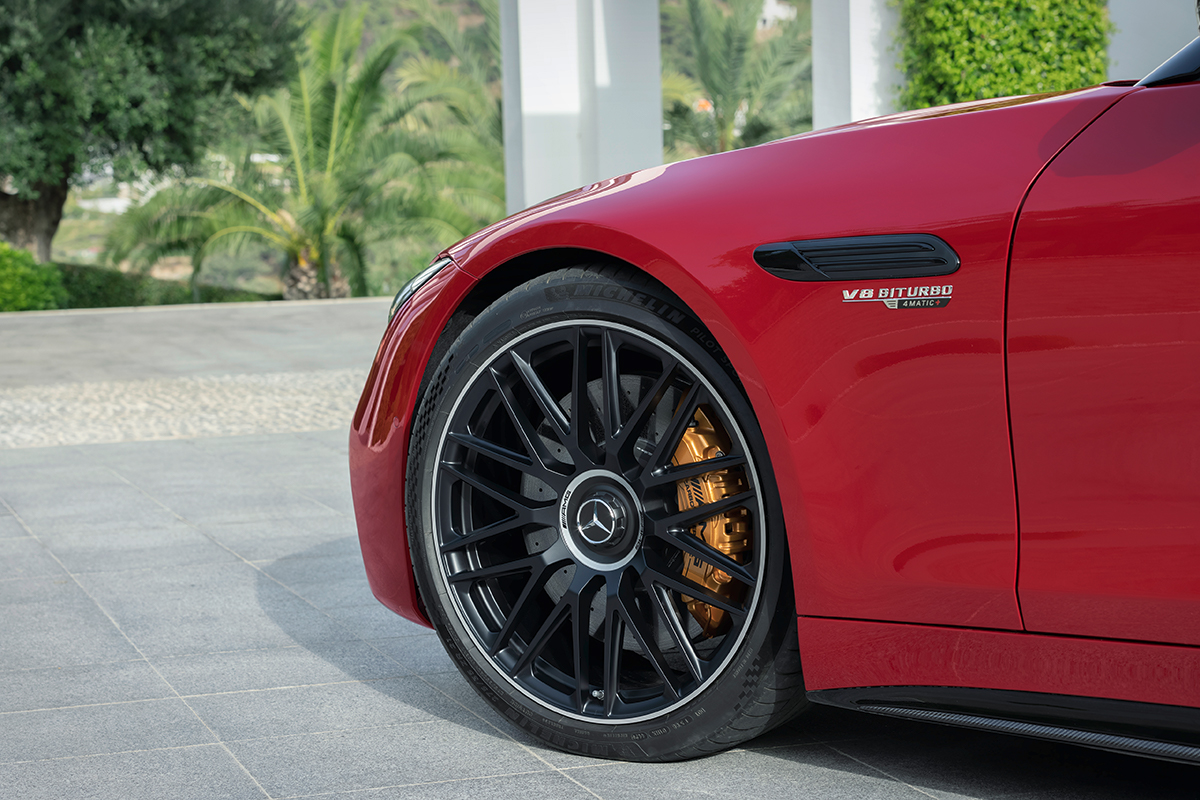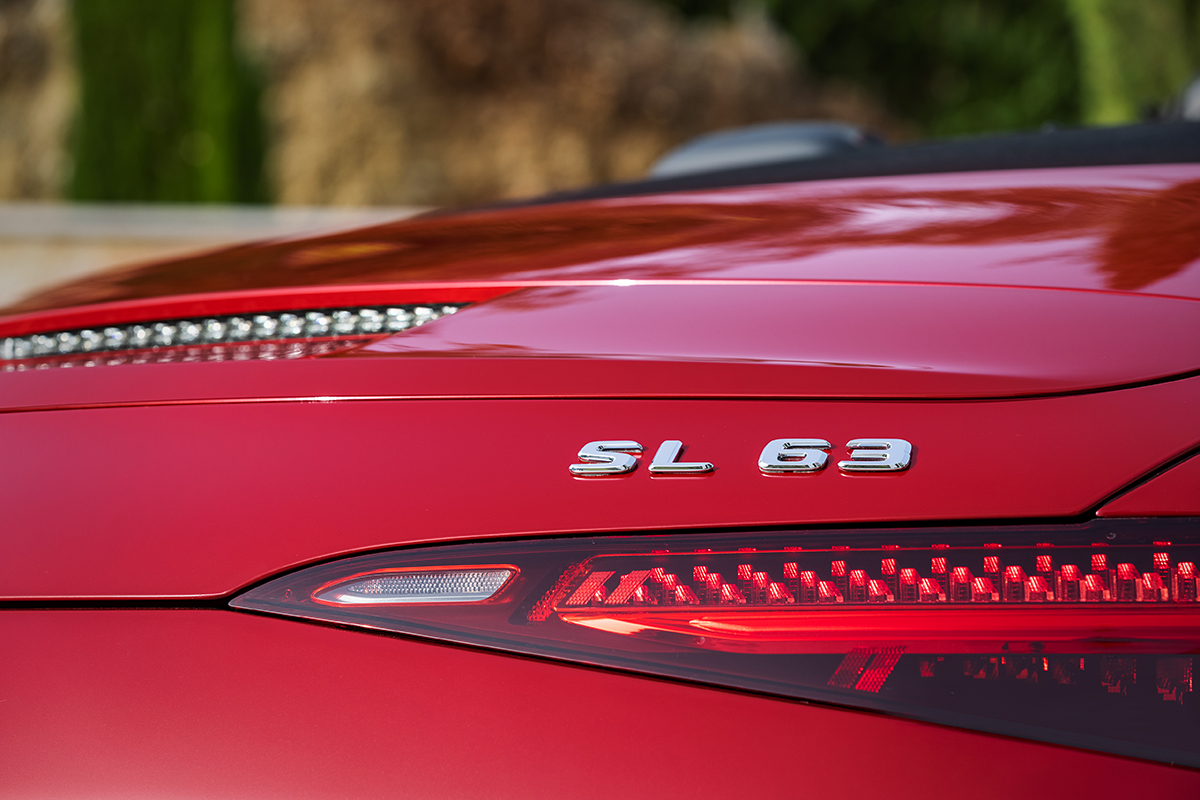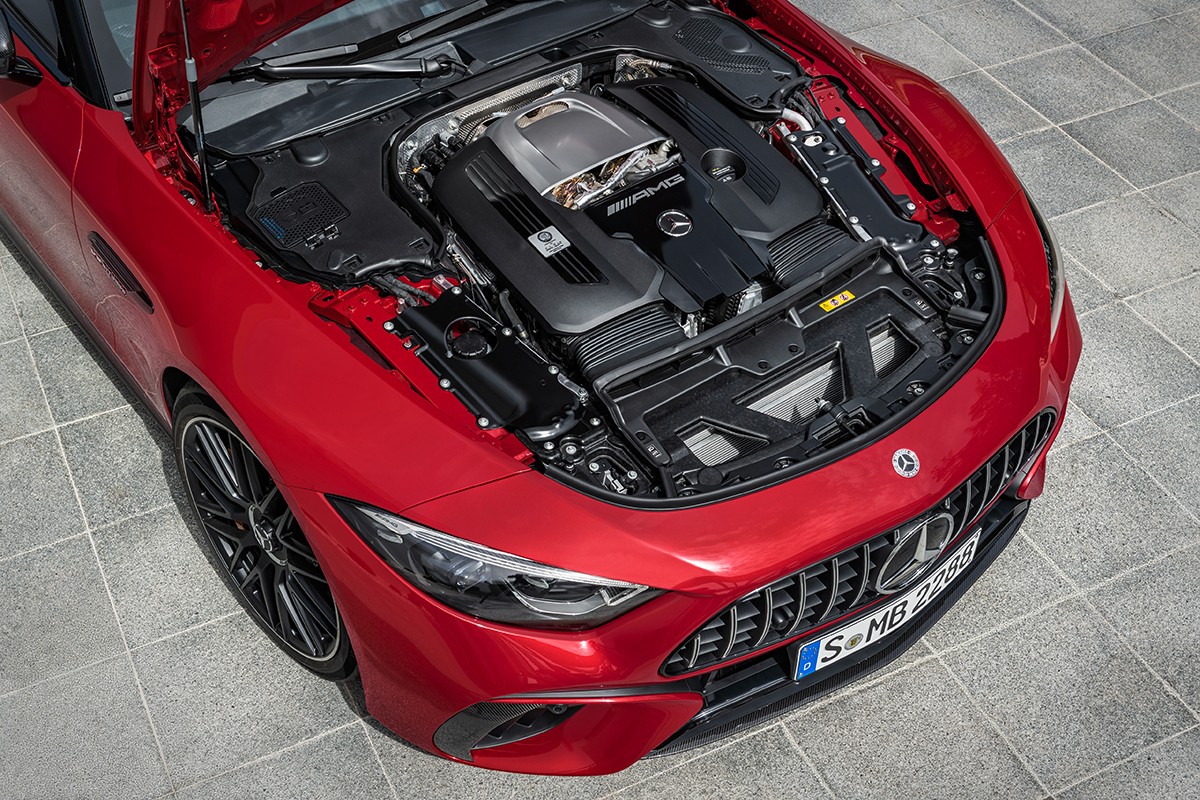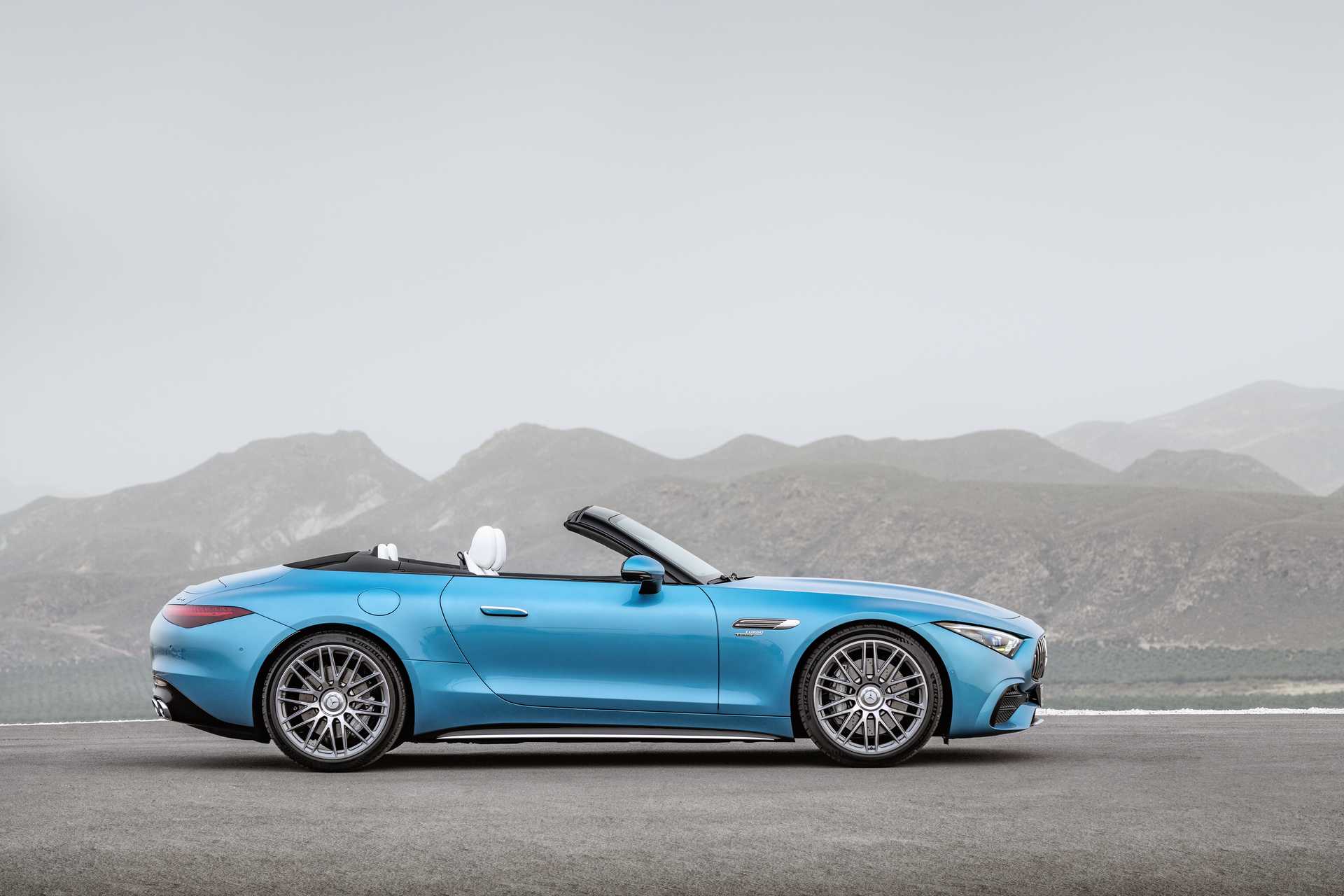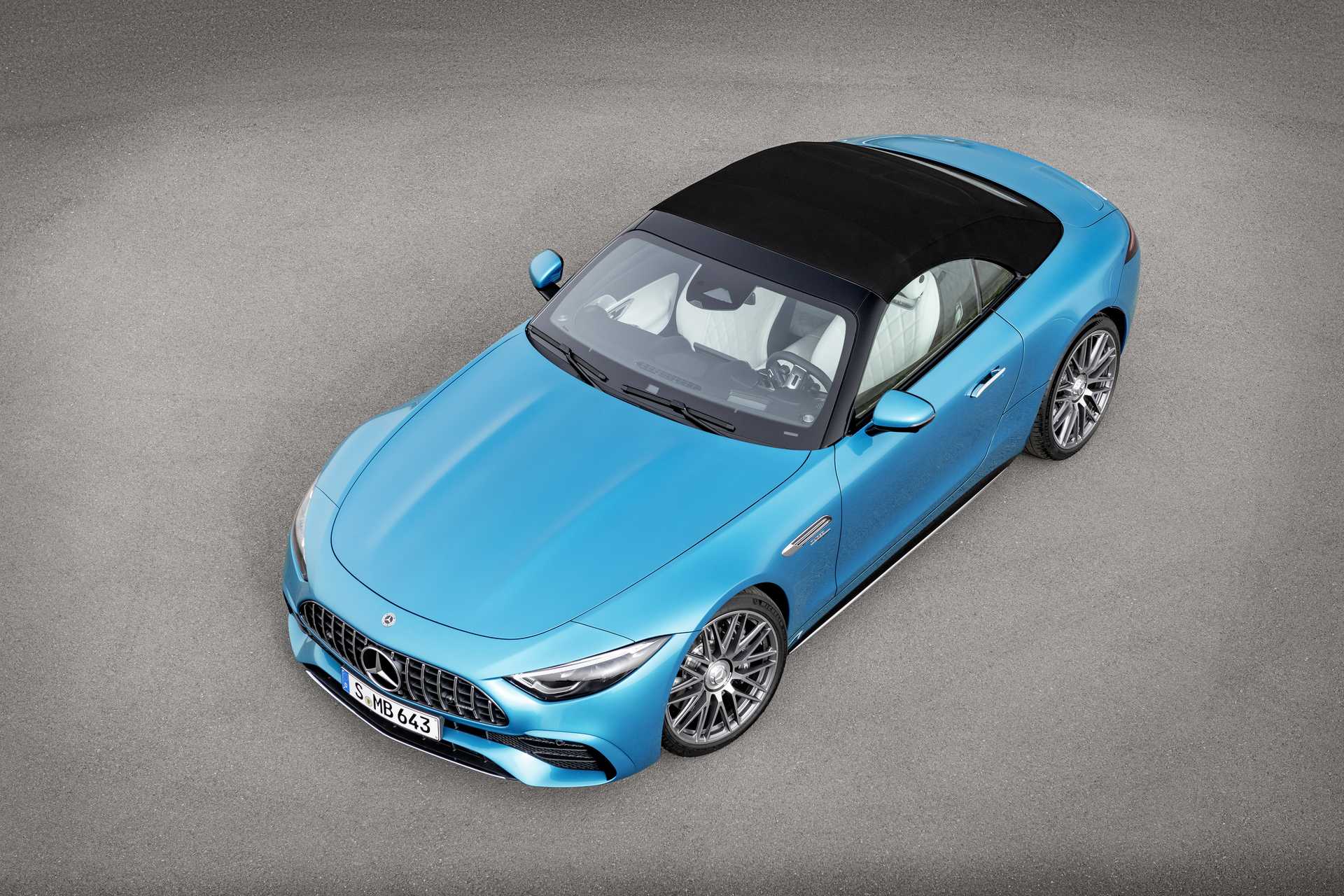The Mercedes-Benz SL, born as a triumphant ‘Sport Leicht’ race car in 1952, transitioned into a road-ready model in 1955. Over the years, it has altered from its racing origins to become an integral part of Mercedes’ extensive model lineup. In earlier times, the SL represented a symbol of change and ambition; those driving SLs were considered visionaries aiming to reshape the world, for better or for worse. However, as time passed, the SL has lost its roots and the once-exclusive allure associated with the ‘playboy’ lifestyle. Today, Mercedes-Benz has seemingly taken a different route, possibly foreshadowed by the Mercedes-Benz 190SL W121 that debuted along the 300SL Gullwing at the New York show in 1954. The once rare and revolutionary SL is now a common sight on every street corner, prompting contemplation about the brand’s strategic turns over the years.
Mercedes-Benz 300 Sport Leicht W194 (1952-1955)

In the aftermath of World War II, the automotive industry in Germany faced a standstill as factories and engineers shifted focus to war-related efforts. But at Mercedes-Benz, they had a vision: to dominate 1950s sports car racing. The result was the birth of the Mercedes 300 ‘Sport Leicht’ or ‘SL’ in 1952 featuring a lightweight tubular frame crafted from aluminum and magnesium that weighed about 50 kilograms. The spaceframe design presented a structural conundrum: the elevated sill height left no room for conventional doors. The ingenious solution? Hinging them from the roof, causing them to ascend gracefully like the wings of a gull, thus giving birth to the iconic “Gullwing” doors. The initial versions of these doors extended just below the side window, making it a challenge for the driver to exit the car. The steering wheel could be tilted to make this process slightly easier, a feature that was also incorporated into the production model in 1955. Later versions of the gullwing doors reached approximately shoulder height for the driver when seated.
Rudy Uhlenhaut’s integration of a 3.0-liter six-cylinder engine from the contemporary sedan boosted power to an impressive 170 hp. The 1952 300 SL achieved remarkable success, securing victories in prestigious races like Mille Miglia, Le Mans, and Carrera Panamericana, leaving an indelible mark on the automotive industry.

Mercedes-Benz 300SL Coupé W198 (1955-1957)
Max Hoffman, importer of luxury European automobiles and visionary from the United States, appeared to grasp the market exceptionally well. He convinced Ferry Porsche to build the Porsche 356 Speedster, affordable and straightforward, the perfect foundation for a race car. Hoffmann was also the person who persuaded Mercedes at a board meeting to create a sports car for the American market, which would become a road-going version of the successful 300 Sport Leicht, the 300SL Coupé W198 (nicknamed Gullwing). Initially, much of the Mercedes team doubted the production story, as the 1952 300SL was rapidly assembled for racing. The Gullwing doors were not even considered beautiful at the time but rather a solution to a problem. During the same board meeting, Max Hoffmann ordered 500 cars, both 300SLs and 190SLs (Mercedes’ take on a ‘SL’ road car, but later on that). The production model of the 300SL Coupé was a well-thought-out finished product:
The 1952 Mercedes-Benz 300 Sport Leicht faced a significant drawback – excessive heat and noise within the driving compartment. This discomfort was attributed to the exhaust of air from the engine compartment through the drive line enclosure under the car’s floor. The initial solution, though not-so-effective, featured two narrow vertical vents ahead of the doors and smaller ones in the rear fenders – a somewhat unattractive design quickly replaced by the more familiar “egg crate” style seen in production cars. A pivotal resolution to this predicament involved fresh air intakes at the front grille and ductwork to introduce cool outside air into the passenger compartment. This intricate system also fed cool air through a double-wall firewall, efficiently dissipating engine heat. Concurrently, subtle yet transformative changes in body styling included reshaped fenders, wheel well openings, and the addition of mudguards or “eyebrows” over the wheel openings. The iconic oval grille with the three-pointed star at its center was introduced, becoming the unmistakable face of subsequent Mercedes-Benz sporting vehicles.
Under the hood, the engineers at Robert Bosch demonstrated their ingenuity by developing a piston-type injection pump capable of precisely metering gasoline to each cylinder. The injection quantity dynamically adjusted to the engine’s needs, as well as the air’s temperature and density, with injection pressure varying between 570 to 680 psi. Addressing further challenges faced by the 1952 race cars, changes included relocating the spark plugs into the cylinder head and installing fuel injection nozzles in the block openings. This innovative approach allowed the nozzles to spray from the cool to the hot side of the chamber, away from the spark plug. The 50-degree cant of the engine was retained to achieve Sindelfingen’s vision of a low hood line, allowing room for 17-inch ram induction pipes providing air to the engine. The 1952 300SL race cars had grappled with an awkward exhaust system arrangement, but with the introduction of those ram induction pipes, the exhaust lines could be strategically relocated under the intake manifold. The culmination of these innovations resulted in a breathtaking engine output of 215 hp (158 kW), propelling the 300 SL to a top speed of 250 km/h. This remarkable achievement secured the 300 SL’s status as the fastest production car of its era. Beyond its mechanical prowess, the 300SL represented a triumph in design and performance, a sentiment echoed by automotive enthusiasts and industry experts alike.
The Mercedes-Benz 300SL was a car for pioneers of the 1950s. The Shah of Iran owned one, as did Juan Peron, Juan Manuel Fangio, Clark Gable, Herbert von Karajan, among other trailbreakers. Even today, the 300 SL is considered the ultimate dream car. In December 1999, it was voted Sports Car of the Century by a jury of trade journalists.

Mercedes-Benz 190SL W121 (1955-1963)
If we momentarily set aside the narrative of the 300SL and begin with the 190SL, the evolution of the SL series appears to align more or less. However, we can’t simply disregard its origins. Originally, Mercedes-Benz envisioned building a roadster on the hefty Mercedes 180 W120 ‘Ponton.’ Yet, Max Hoffman insisted that the SL should resemble the 1952 racing car. Consequently, Mercedes introduced both the 300SL and the 190SL in 1954.
In today’s context, a Mercedes 180 W120 ‘Ponton’ can be likened to an S-class, somewhat cumbersome. With its chassis and as many recycled components as possible from the 180, along with its robust 105hp 1.9-liter 4-cylinder engine, the 190SL was undeniably hefty. Hefty but beautiful. Beautiful but expensive. Expensive but not 300SL-expensive, yet not as swift. And so, the circle is complete. The 190SL demonstrated that Mercedes-Benz recognized people often chose elegance over performance. Was it about elegance? Or was it status? Remember how those who aimed to change the world often drove SLs. You could drive one yourself now, too.
Mercedes-Benz 300 SL Roadster W198 II (1957-1963)
In 1957, Mercedes-Benz likely instructed Uhlenhaut to develop the 300SL roadster, marking the end of the Gullwing era. The decision might have stemmed from reservations about the Gullwing doors (Mercedes really didn’t like them, did they?), leading to the introduction of a more universally appealing roadster.
The midsection truss frames of the Roadster were lowered by 50%, enabling the use of standard doors. The standardization of the competition camshaft and the optional high compression ratio engine (9.5:1), providing an increased engine output of 250 bhp, were notable upgrades. Belly pans were eliminated, and the steering transitioned from 2 to 3 turns lock to lock. However, these enhancements resulted in an added weight of over 90kg, with the curb weight going from approximately 1300 to 1400kg. Consequently, the standard rear axle ratio was adjusted from 3.64 to 3.89:1.
Weight was not the only thing that had increased, so did the new price. The 300SL coupes were sold for $8,905, whereas the starting price for the roadster was $10,970. A total of 1858 roadsters were manufactured before the discontinuation of the 300SL model in 1964.
In numerous aspects, there is no doubt that the roadster surpasses the 300SL Gullwing as a superior car. The suspension roll center was brought down by incorporating a low pivot rear axle with a helper spring, effectively reducing roll stiffness. This modification enhances the car’s adaptability to different tire types, and notably, the Michelin X steel-belted radials were included as standard factory equipment. In their road test of the vehicle, Road and Track magazine noted, “…..the car handles beautifully under all conditions.”

Mercedes-Benz SL W113 'Pagoda' (1963-1971)
The focus of the Pagoda shifted away from creating a super-light sports car and even further from motorsport (although an almost standard 230SL won the Spa-Sofia-Liege rally). Instead, it aimed at creating an open-top GT car, something between the 300SL and the 190SL—sporty yet luxurious. Features like a mirror on the passenger side and a radio were standard. Automatic transmission and power steering were commonly chosen options. Many consider the Mercedes Pagoda as the best SL. Celebrities such as John Lennon, Tina Turner, and Priscilla Presley owned one. Contemporary owners include David Coulthard, Emma Bunton, and Harry Styles.
The Pagoda’s design team, led by Friedrich Geiger, likely saw contributions from designer Paul Bracq and engineer Béla Barényi. The unique concave bow of the hard-top roof, designed by Barényi, earned the car its nickname “Pagoda,” because it looked like a Japanese Pagoda roof.
Barényi played a significant role in passive safety too, introducing the crumple zone. The W113 was hailed as the ‘first sports car worldwide with a safety body consisting of a rigid passenger cell and front and rear crumple zones.’ Safety features, including three-point safety belts, were added in 1966, well ahead of legal requirements.
The W113 shared the basic inline-6-engine block with the W111 saloon but underwent revisions for a more sporting application. The six-plunger injection pump, a notable change, significantly increased power by allowing more direct fuel injection into pre-heated intake ports. The mechanical injection system in the W113 was advanced for its time, adjusting for atmospheric conditions and using coolant temperature monitoring for efficient fuel metering.
Despite using aluminum in many sections, the Pagoda still weighed nearly 1400kg, considerably more than contemporary Jaguar E-types or Porsche 911s. Yet, at the press launch on the Montroux circuit, Rudolf Uhlenhaut, at age of 57, drove the 230SL impressively fast, just 0.2 seconds slower than Mike Parkes in a more powerful Ferrari 250 Berlinetta, proving the true sports-car-status of the Merc Pagoda.
Within the evolution of the W113, a shift towards luxury over performance is evident. Many 230SL owners chose manual, while most 280SL owners preferred automatic. This trend continued in the R107 generation. During its eight-year production run, the W113 sold 48,912 units, with the majority being 280 SLs. The Pagoda was not cheap. A 280SL with hardtop, automatic transmission, and power steering was nearly double the price of a Jaguar E-Type 4.2.

Mercedes-Benz SL R107 (1971-1989)
In the wake of the iconic ‘Pagoda,’ the Mercedes-Benz SL R107 took the stage, poised to meet the high standards set by its predecessor and satisfy the discerning clientele of Mercedes. This generation of SL was distinctly crafted for luxurious grand touring, shedding the aura of a sports car for the allure of a refined GT vehicle. It was designed not just to traverse the country smoothly and comfortably but to do so in style, marking a departure from the sports car ethos.
Prioritizing safety and comfort, the R107 SL earned the moniker ‘Panzerwagen.’ Robust crash structures and a padded four-spoke steering wheel underscored the commitment to safety. However, with safety and comfort comes added weight, a departure from Mercedes’ initial ‘Sport Leicht’ philosophy. Despite this, the R107 SL was endowed with performance through a V8 engine derived from its larger saloon counterpart.
The SL made its debut with a 350 and 350 4.5, the latter being rebranded as the 450 in 1973. In response to the fuel crisis of the early 1970s, Mercedes introduced the 280SL in 1974, equipped with a robust six-cylinder engine. From then on, the series consistently featured a six-cylinder engine; the 300SL replaced the 280 in 1985 and remained in production until the discontinuation of the model. Various versions with V8 engine capacities were offered, including the 380, 420, 500, and the 560SL as the ultimate Mercedes roadster.
Throughout its lifespan, the R107 SL evolved with technological advancements. From March 1980 onwards, it featured ABS anti-lock brakes, and by the beginning of 1982, a driver’s airbag became an optional feature. In early 1980, the previously optional hardtop became standard equipment across all SL models, adding to its overall allure. Even as the model approached the end of its production, Mercedes continued to innovate, introducing a closed-loop catalytic converter for all versions from mid-1985.
The R107 SL would go on to become the longest and most produced SL generation, with an impressive 18 years in production and a total of 237,287 units built between 1971 and 1989. Despite its superiority over the Pagoda, the abundant availability has kept prices relatively affordable, unlike the ‘Pagoda’ models that have become a distant dream for many enthusiasts.
The allure of the Mercedes-Benz SL R107 extended, just as previous generations, beyond enthusiasts to the celebrities. From Donna Summer and Ben Stein to Madonna and Bruce Lee, a plethora of notable figures chose to cruise in the timeless elegance of the R107, solidifying its status as a beloved classic among the stars.
The 450SLC (C for Coupé) 5.0 not only participated, but also emerged victorious in the 1978 Vuelta à la América del Sud rally, spanning 10 countries in South America from Argentina to Chile. Four 450SLCs were entered and remarkably, three of them clinched top positions, securing first, second, and fourth places, while a Mercedes-Benz 280E claimed third. The magnitude of these pan-continental rallies cannot be overstated. The Vuelta à la América del Sud covered nearly 18,000 miles of challenging terrain, including mud, gravel, and rutted tracks. Despite being built on the chassis of a swift German executive coupe, the SLC demonstrated remarkable toughness, enduring the harsh elements. Oh, and it rallied with its automatic 3-speed gearbox, making it the first car to win a World Rally Championship event with an automatic gearbox.
After the 300SL W192 succes, the three-pointed star became a rare sight on the circuit. A lesser known hero was the Mampe-sponsored one-off AMG Mercedes-Benz 450 SLC that out of nowhere appeared in 1978 on Silverstone.

Mercedes-Benz SL R129 (1989-2001)
By the advent of the R129 generation of the SL, it seems Mercedes might have been playfully toying with the very essence of the ‘Sport Leicht’ name, especially when equipped with a V12 engine that nearly tips the scales at 2 tons. Despite this weighty paradox, the R129 stands as a testament to the enduring legacy of Mercedes’ iconic SL series, capturing the hearts of enthusiasts for compelling reasons. The R129 marked the conclusion of an era where celebrities were drawn to the ownership of the SL. Princess Diana exchanged her Jaguar for an SL and got in trouble for it.
As each generation adds more heft, as does this gen SL, the R129 must live up to its legacy by amping up the power. The R129 SL500 boasts a 24-valve 5.0-liter V8 with dual camshafts, delivering a robust 322 horsepower, while the R129 SL600 commands attention with its formidable 6.0 V12. Even the entry-level six-cylinder variant outpaces its V8 predecessor, the SL R107.
Beyond its sports car ambitions, the R129 showcases technological prowess with an unwavering focus on comfort. Pioneering features such as brake assistance, stability control, and active damping, seamlessly integrated with a self-leveling suspension, redefine the new SL concept. From rain-sensing wipers to passenger seat occupant detection, ensuring airbag deactivation for seats weighing less than 10 kg, and a central locking system that operates on both storage compartments and doors, the R129 embodies undeniable luxury and sophistication.
A significant turning point in the R129’s narrative comes with its distinction as the first SLs available with AMG tuning, predating Mercedes’ majority stake acquisition in AMG. This era witnesses the birth of the official AMG model in 1993, the SL60 AMG. In 1999 the formidable SL73 AMG was introduced, housing a 525bhp 7.3-liter V12—an engine that would later find its way into the Pagani Zonda.
Navigating the contradictions embodied by the R129 SL, it emerges not only as a heavyweight champion in power but also as a technological trailblazer, challenging and redefining conventional notions of the SL. The R129 not only pays homage to its lineage but also sets the stage for the next thrilling chapter in the evolution of the Mercedes-Benz SL series.

Mercedes-Benz SL R230 (2001-2011)
Stepping back more than two decades, the earliest versions of the SL R230 hold a special place in my heart as the generation I grew up with, encapsulating a sense of nostalgia that makes it incredibly appealing to me. However, beyond the emotional connection, to truly understand the evolution of the SL series, one must delve into the facts.
The press was ablaze with enthusiasm upon the launch of the R230, praising its groundbreaking design language. Similar to its predecessors, this generation utilized cutting-edge technology, notably the use of a 3D super-computer named ‘CAVE.’ This revolutionary computer projected full-sized images through five projectors, allowing for a meticulous digital inspection of all surfaces – a first in the automotive industry. The R230’s design, ahead of its time (yet with a nod to the past), featured four headlights and a unique two-in-one convertible/hardtop roof comprised of foldable metal plates, with an optional panoramic roof. The SL500 version was also built with ABC – Active Body Control, part of the car’s new adjustable air suspension system, offering various suspension stiffness settings with automatic control and adjustable ride height. The SL350 featured traditional coil springs (although ABC was optional), adaptive cruise control, automatic xenon headlights, COMAND-based in-car entertainment with sat-nav, standard dual-zone digital climate control with AC, keyless go, an on-board computer and electric heated memory seats with optional seat cooling and massage function. It seems the SL series served as a canvas for Mercedes to apply technological innovations rather than simply developing a super light sports car. The side air intakes pay homage to those of the iconic 300SL W198, though.
A true modern SL wouldn’t be complete without an array of engine options. At launch, the R230 offered the SL500, equipped with a 5.0-liter V8 M113 (302 hp), and the SL350 featuring the M112 (242 hp) 3.7-liter V6. In 2003, the formidable SL55 AMG entered the scene, boasting the M113 5.5-liter V8 with a supercharger, producing a staggering 493 hp and 700 Nm of torque – a symphony of performance and sound. The more refined SL600, introduced in the same year, shared the SL55’s power but with additional torque, courtesy of its 5.5-liter V12 twin-turbo engine. The 2004 SL65 AMG took it a step further with the M275 6.0-liter V12, delivering a whopping 604 hp and 1000 Nm of torque, exclusively driving the rear wheels through an automatic transmission.
Yet, the ultimate question persists: Does the SL R230 deviate from the initial ‘Sport Leicht’ concept? Weighing in at just under 1700kg for the 6-cylinder version and nearly 2000kg for the 12-cylinder variant, it becomes clear that this generation prioritizes comfort, safety and performance over weight reduction, leading us to characterize it as ‘Sport Luxuriös.’

Mercedes SL R231 (2012-2020)
In the illustrious lineage of the Mercedes-Benz SL series, the R231 stands as the sixth iteration, blurring the lines between ‘Sport Leicht’ and ‘Sport Luxuriös’ even more. Shedding its lightweight aspirations, a trait it never truly embraced, especially when tracing its roots back to the 190SL rather than the iconic 300SL, the R231 is more than just a generational shift – it’s yet another transformation of the SL’s identity.
Is it still appropriate to categorize this generation as a sports car? Or even a tourer? The dichotomy between sportiness and touring comfort seems to have shifted with the R231, leaving enthusiasts pondering Mercedes-Benz’s direction for this generation. Also the status associated with owning an SL faded away with this generation.
Aesthetically, the R231 draws inspiration from the iconic 300SL W198 even more than the SL R230, featuring a broad grille, a three-pointed star enclosed in a grand circle, a singular vertical line cutting through the grille, side vents, and distinctive headlights. This classic appeal seamlessly extends to the interior, where quality reigns supreme with a combination of leather, wood, and metal, especially in the range-topping models. Interestingly, Mercedes chose to showcase all previous generations fort he press release, except for the R230, emphasizing the R231’s departure from its grandfathers. Well, at least in terms of design.
Built on a lightweight aluminum chassis, the R231 offers a dynamic driving experience powered by a 6- or 8-cylinder engine, depending on the version. Notably absent from the standard lineup is the 12-cylinder powerhouse, now reserved for AMG enthusiasts willing to delve into six-figure price tags. The chassis features multi-link suspensions at all corners, with aluminum components at the front control arms and steering knuckle to reduce unsprung weight. The suspension setup includes steel springs and electronic adaptive damping as standard, while Active Body Control (ABC) suspension remains an enticing optional feature. The steering system undergoes a modern shift with electromechanical assistance, enabling variable gear ratios and speed-sensitive assistance.
At the zenith of the R231 lineup, the SL500 follows the philosophy of the 190SL W121, prioritizing style, design, and technology over sheer driving pleasure. For those seeking an adrenaline rush, the SL63 AMG with its 5.5-liter twin-turbo V8 and the SL65 AMG featuring a 6.0-liter twin-turbo V12 offer an exhilarating alternative, albeit with a price tag that commands attention.

Mercedes-Benz SL R232 (2022-now)
The seventh iteration of the iconic SL series, the R232, appears to herald the revival of the ‘Sport Leicht’ philosophy. While not exactly featherlight (1875kg for the SL55 and 1895kg for the SL63), it boldly reclaims its sporty heritage under the exclusive supervision of Mercedes-AMG. This strategic shift is driven by the brand’s recognition of a declining trend in sales for luxury roadsters, attributed to the rising popularity of crossovers and SUVs.
The SL500, once synonymous with luxurious roadster prowess, takes a backseat as Mercedes refocuses on injecting a renewed sense of sportiness to boost sales. To avoid encroaching on the AMG-GT territory, Mercedes ingeniously introduces two extra seats, harking back to the 2+2 configuration last seen in the R129. Is Mercedes acknowledging that the earlier SL generations were the most captivating?
In a bid to compete with the Porsche 911 Cabriolet and trim down weight, Mercedes makes a daring move by reverting to a fabric soft-top. The R232 not only nods to the 1952 300SL W194 visually with the ‘Panamericana’ grill but also features an aluminium space frame, making it more original-SL-like than any other generation.
The 6 and 12-cylinder engines bid adieu in the R232 lineup. Both the SL55 and SL63 now boast a twin-turbocharged 4.0-liter V8, each distinguished by turbo configurations and intake systems. The SL55 delivers around 483 hp and 700 Nm of torque, hitting a top speed of approximately 294 km/h and accelerating from 0 to 100 km/h in about 3.8 seconds. On the other end, the SL63 elevates the performance to about 594 hp and 800 Nm of torque, achieving a higher top speed of around 316 km/h and a faster 0 to 100 km/h acceleration in about 3.5 seconds. The swift launches are facilitated by the standard use of the 4MATIC+ system and a 9-speed MCT gearbox – marking the first all-wheel-drive SL.
Also this generation also serves as canvas for their technological innovations: the R232 introduces groundbreaking chassis dynamics. While the rear axle retains the multi-link setup, the front suspension shifts from a 4-link to a 5-link configuration, neatly housed within the wheel rim. As an exclusive AMG model, the SL opts for conventional steel springs over the air suspension preferred in other Mercedes production cars. The SL55 comes equipped with adaptive dampers, while the SL63 introduces a revolutionary suspension technology named “Active Ride Control.” The four-wheel-steer system counters the longer wheelbase and additional mass, enhancing maneuverability and reducing turning radius.
Mercedes brings Formula 1 technology to the streets with the SL43 AMG: it pioneers an electrified exhaust gas turbocharger, a first for road cars. Based on the existing M139 2.0-liter four-cylinder engine found in the A45, the SL43 prioritizes refinement and driving dynamics. Replacing the traditional turbo with a smaller electrified counterpart eliminates turbo lag, resulting in 381 hp at 6750 rpm and 354 lbft of torque from 3250 to 5000 rpm. This forward-thinking approach positions the SL43 AMG at the forefront of automotive innovation.

In conclusion, the question arises whether Mercedes has strayed too far from the original SL ideology over the years. While the SL has served as a canvas for the integration of new technologies, the introduction of the R232 suggests a return to making a bona fide sports car that draws inspirations from the motorsports. The future remains uncertain, inviting anticipation for what lies ahead in the evolution of the SL series. My question remains: when was the last time you craved having an SL?



